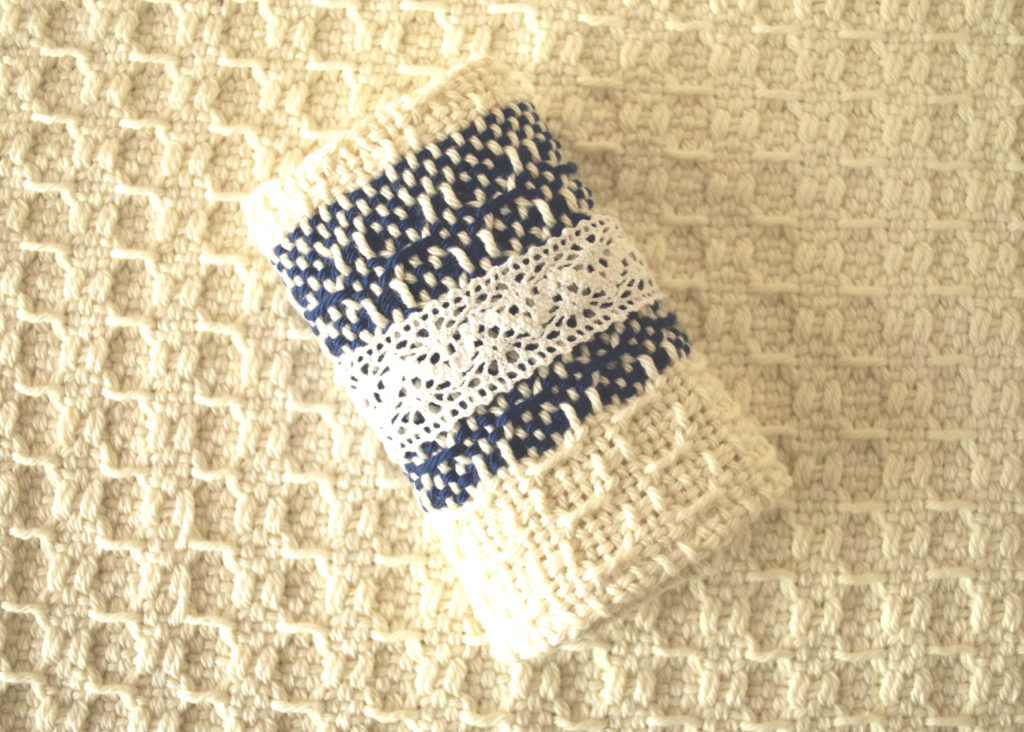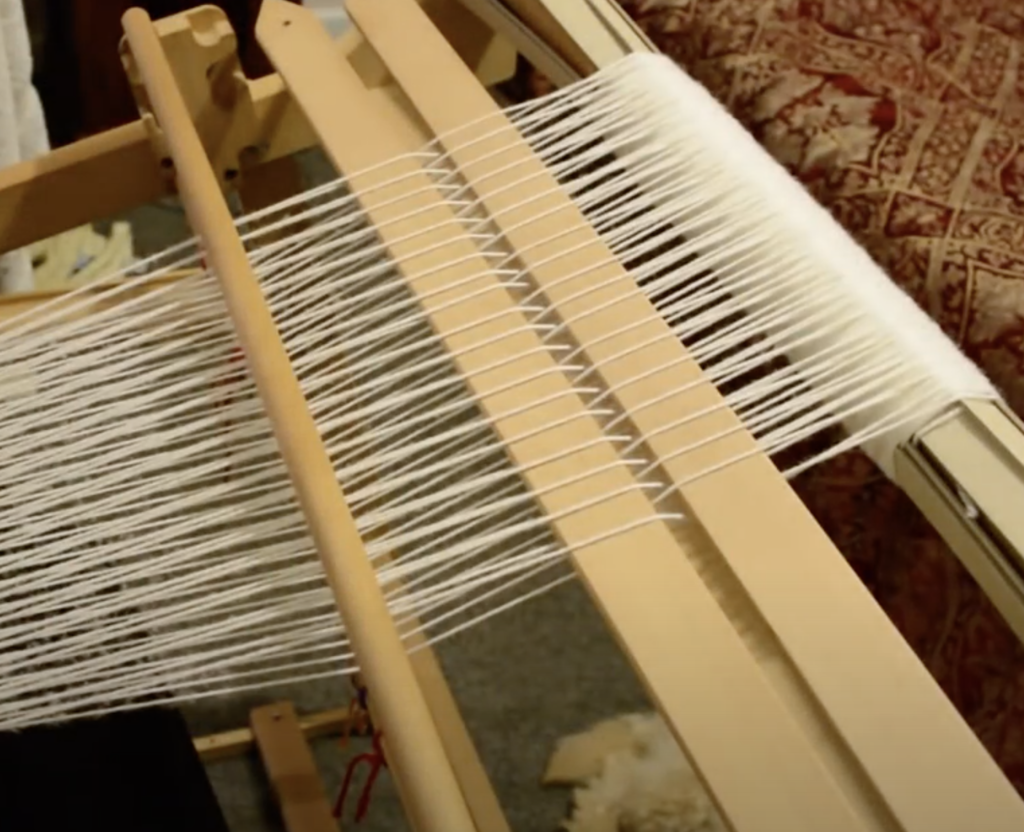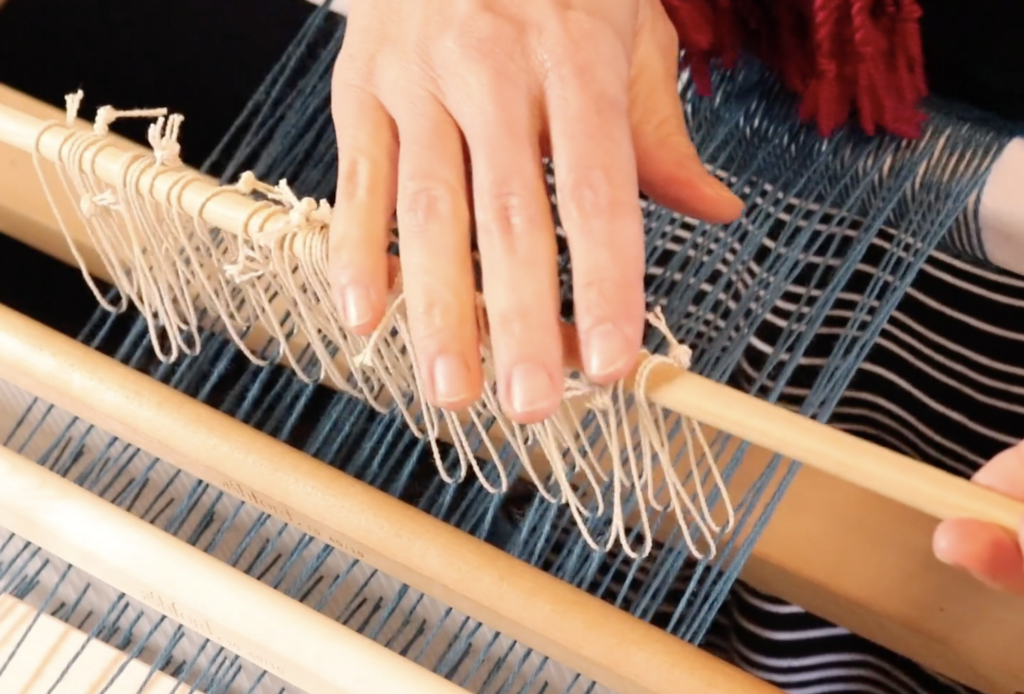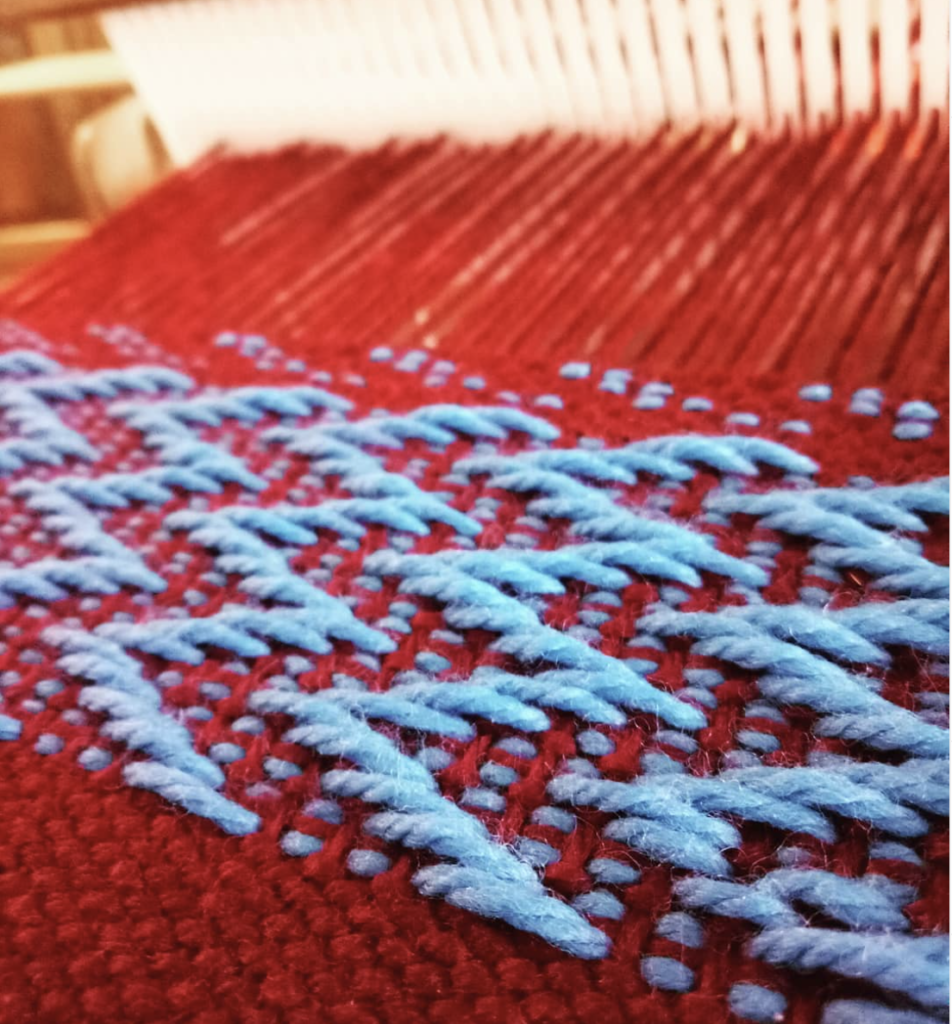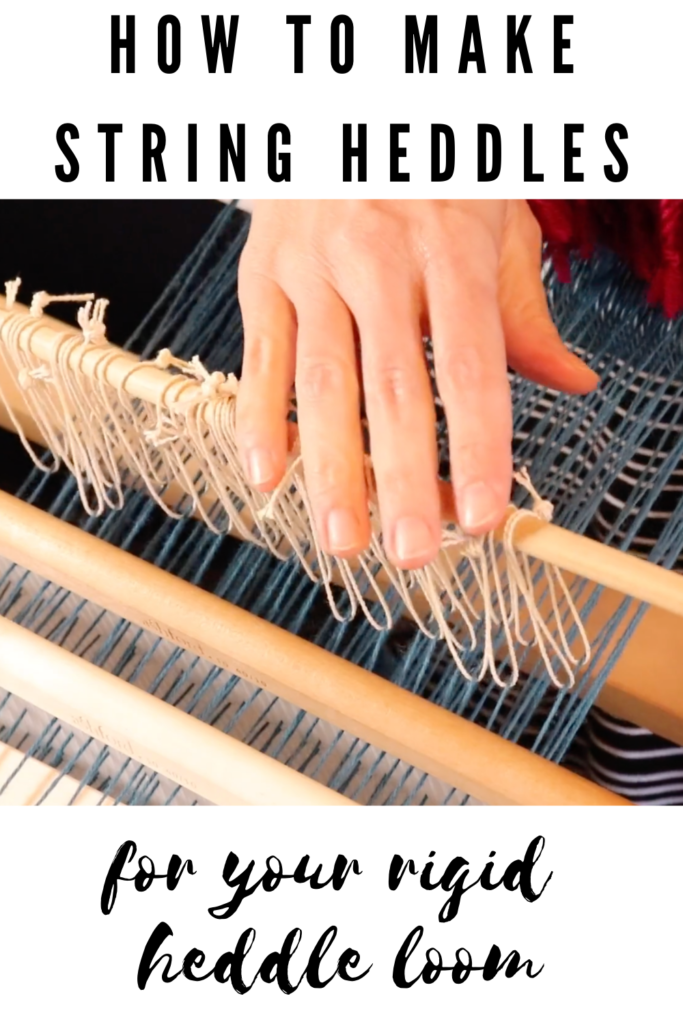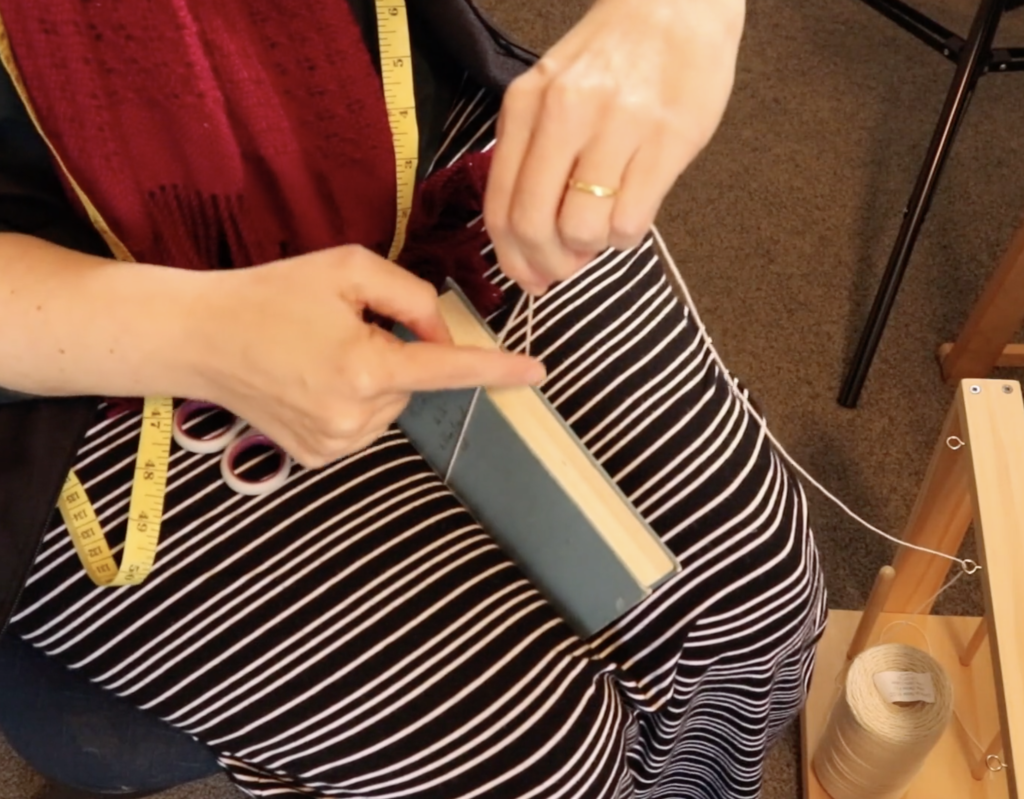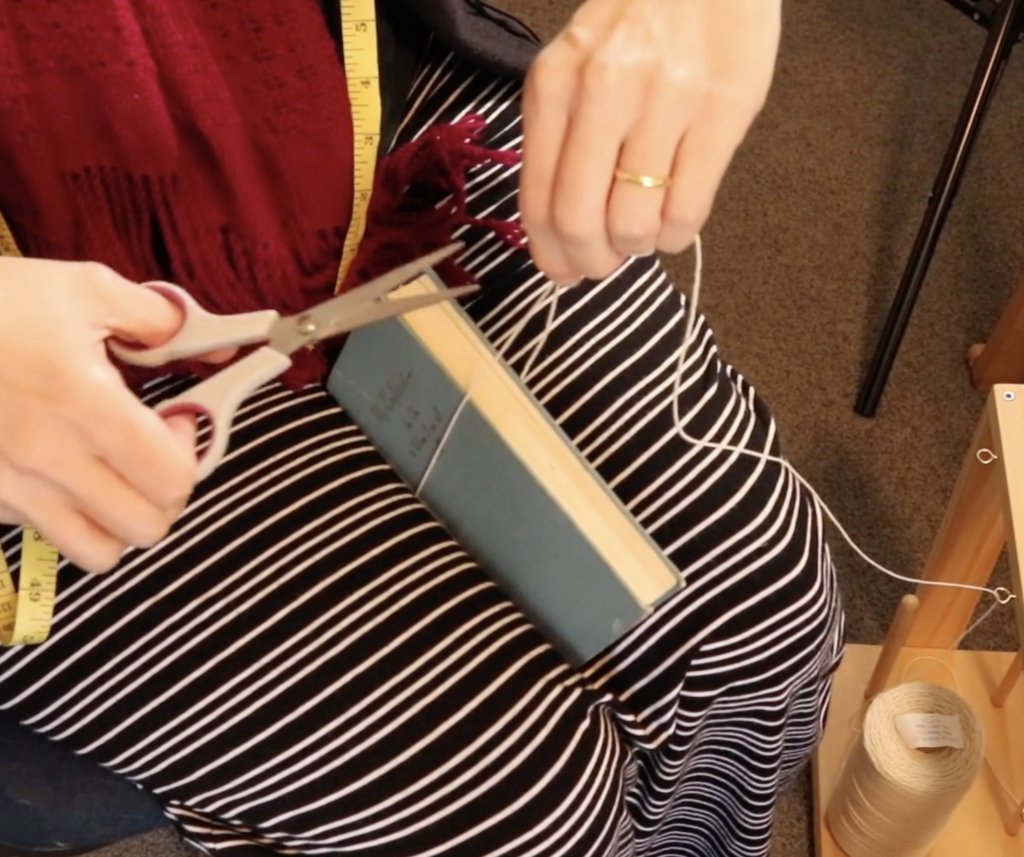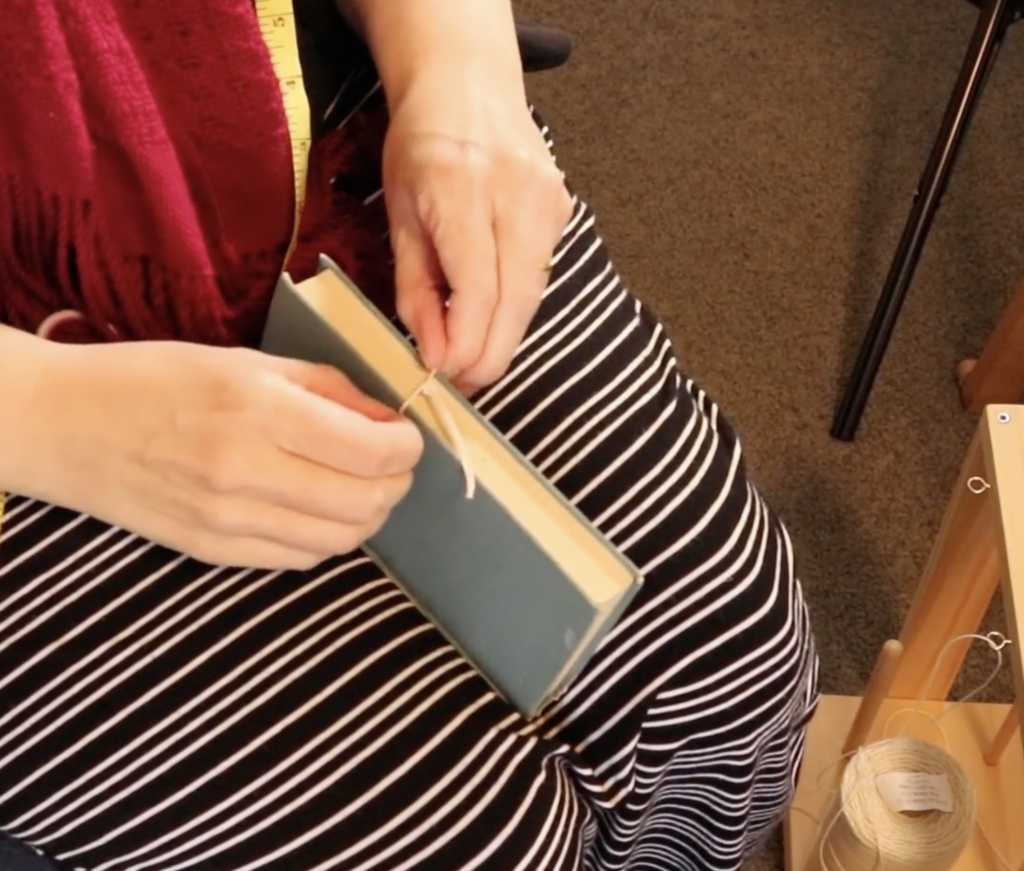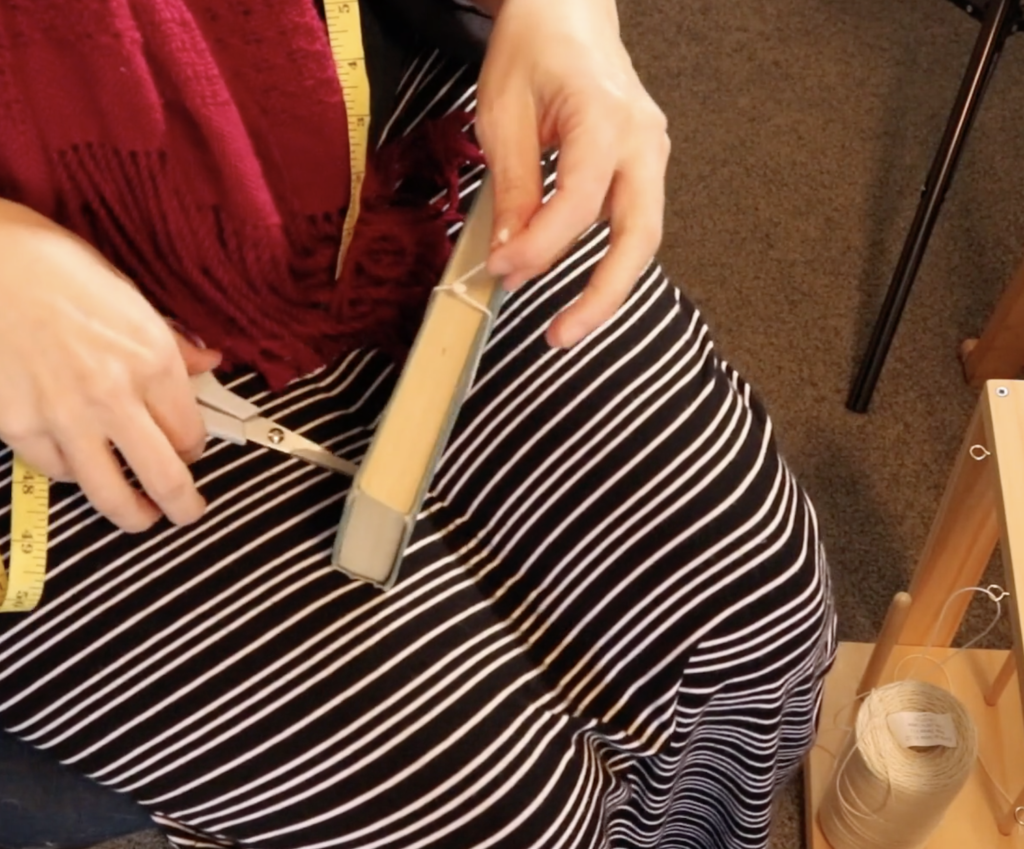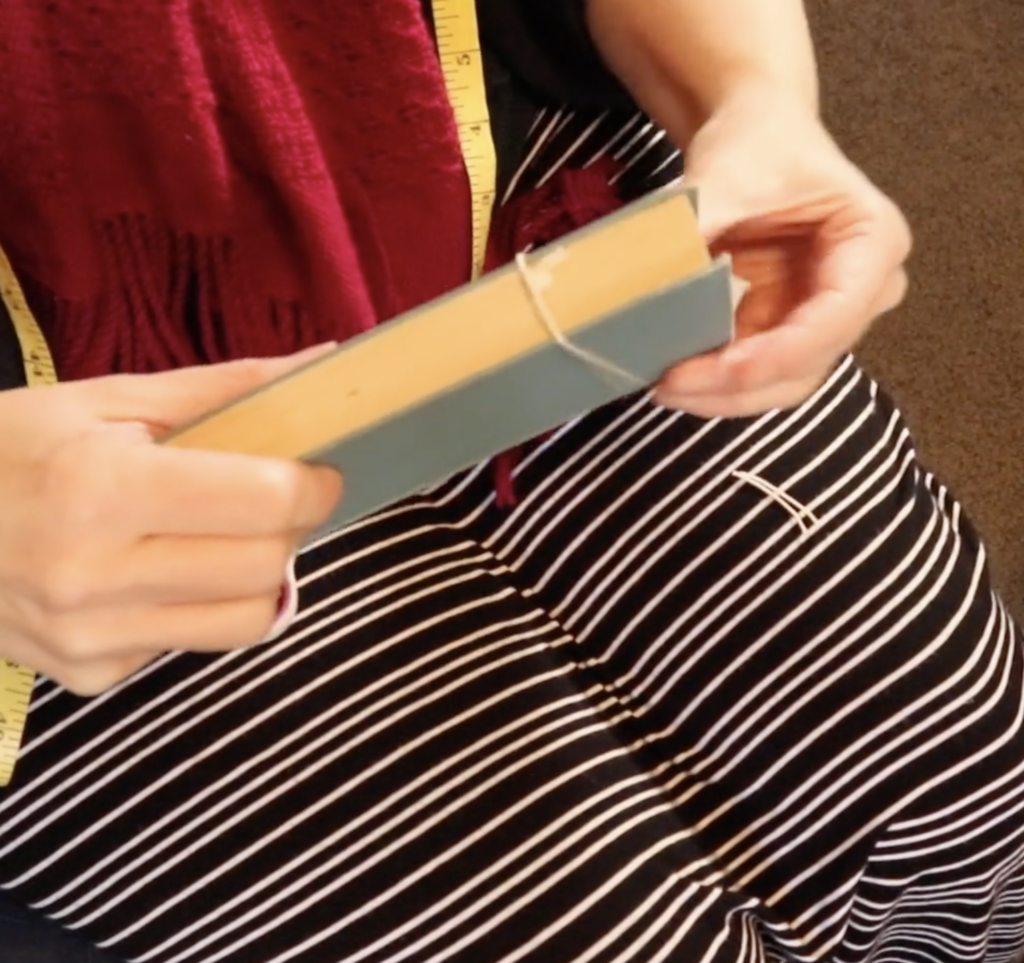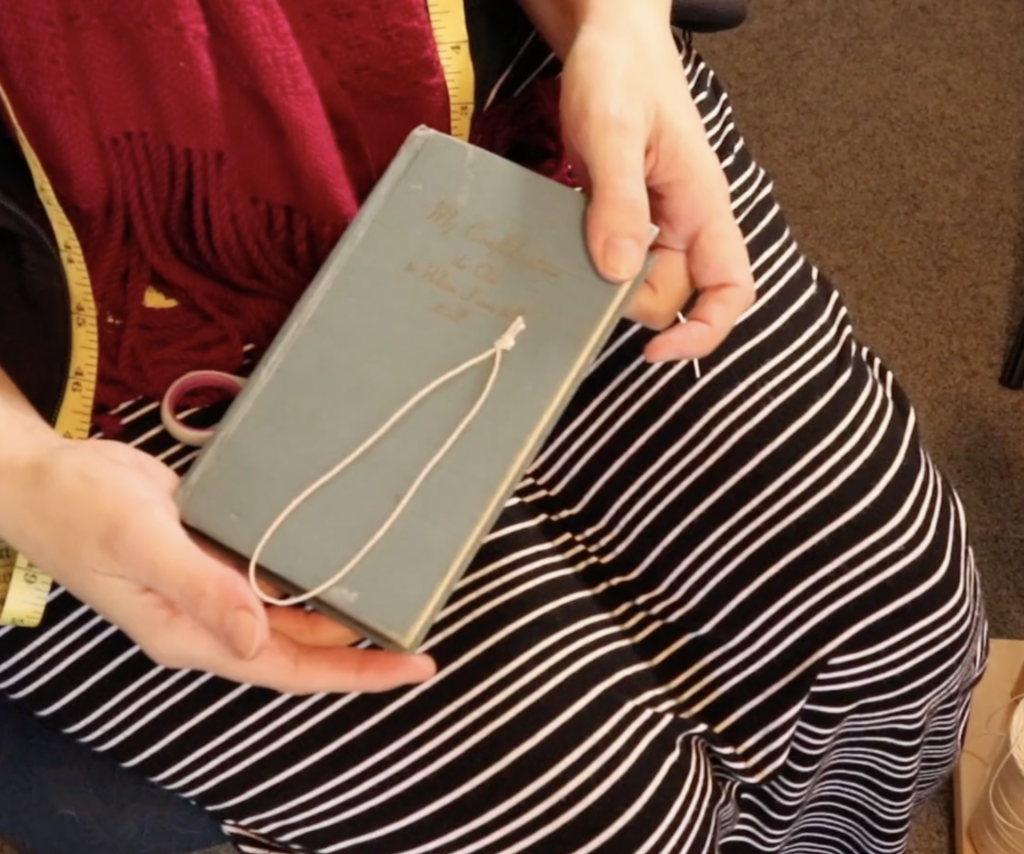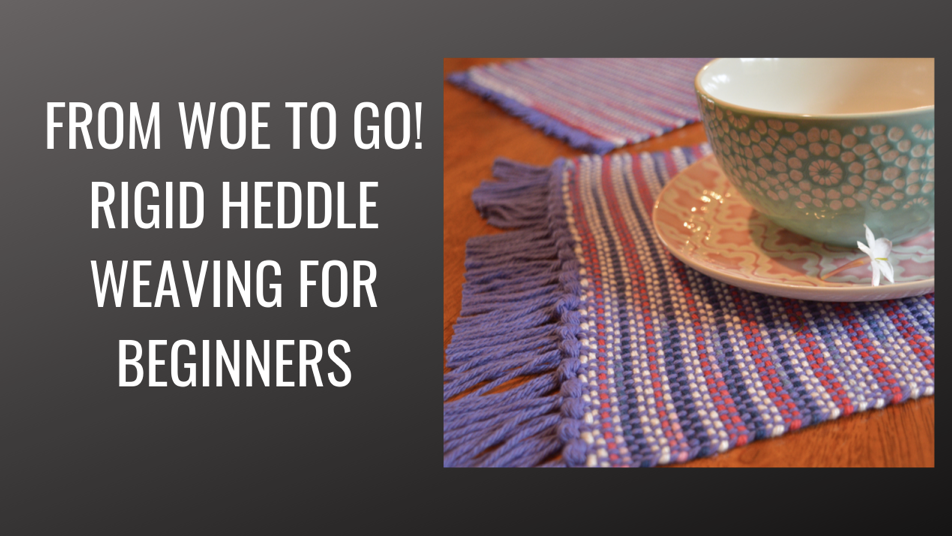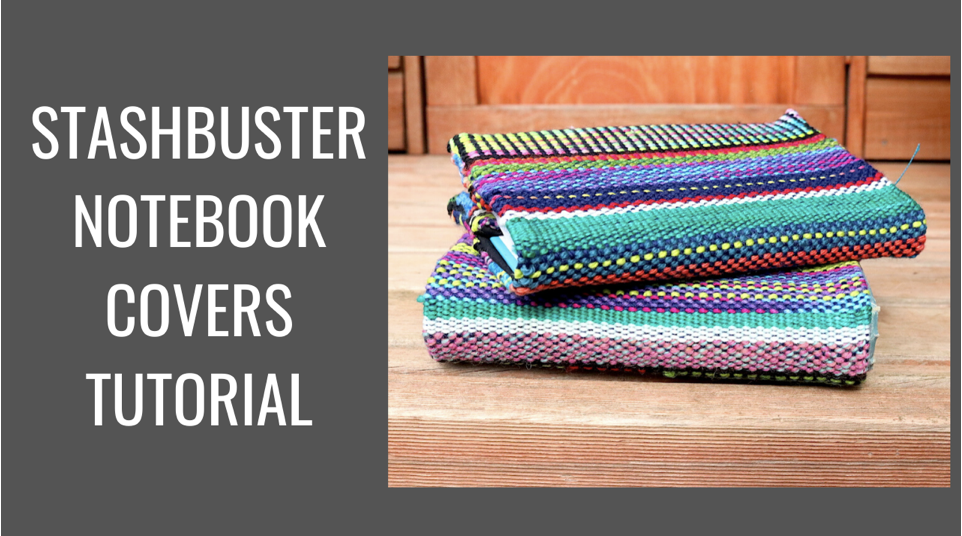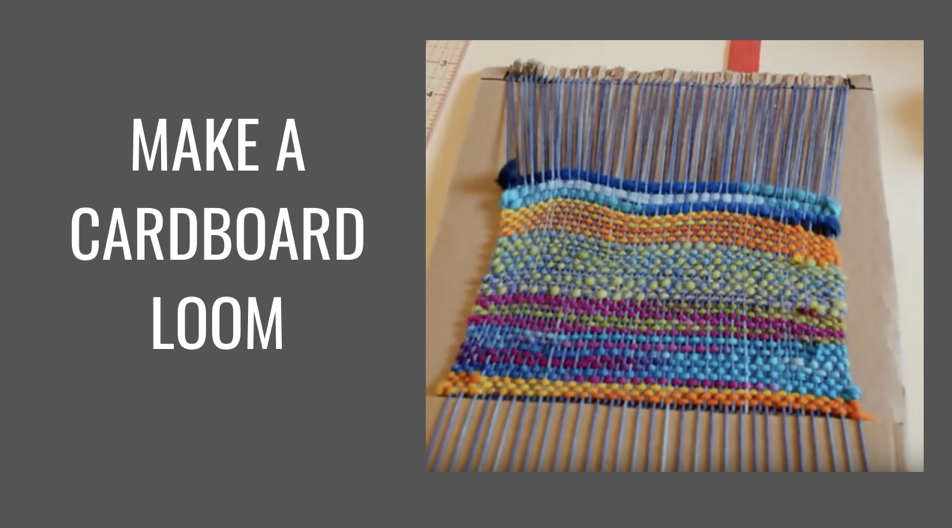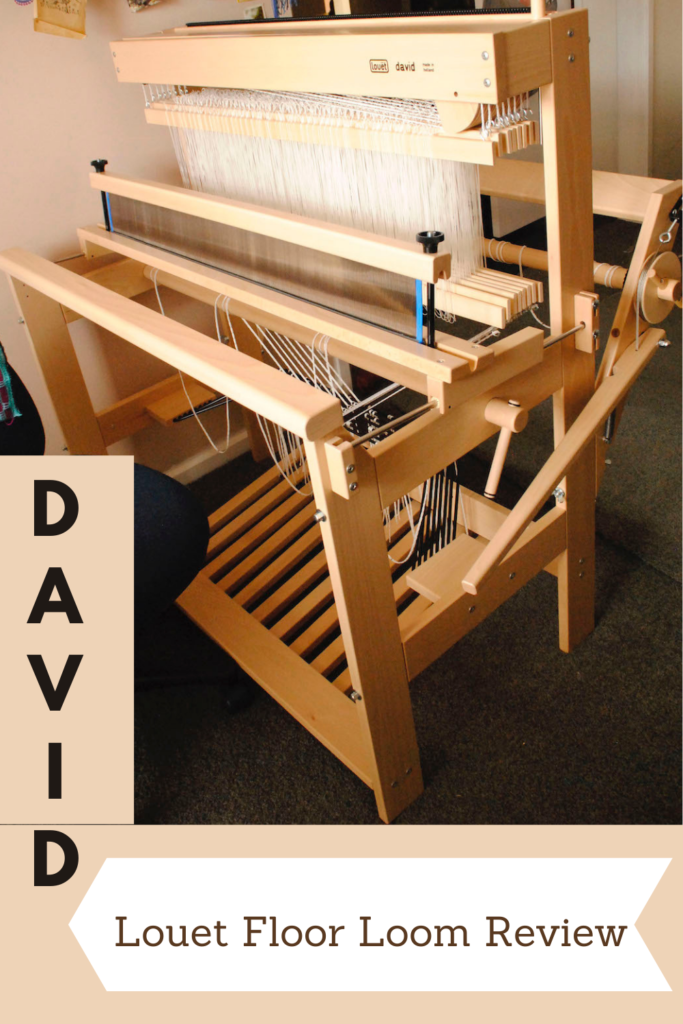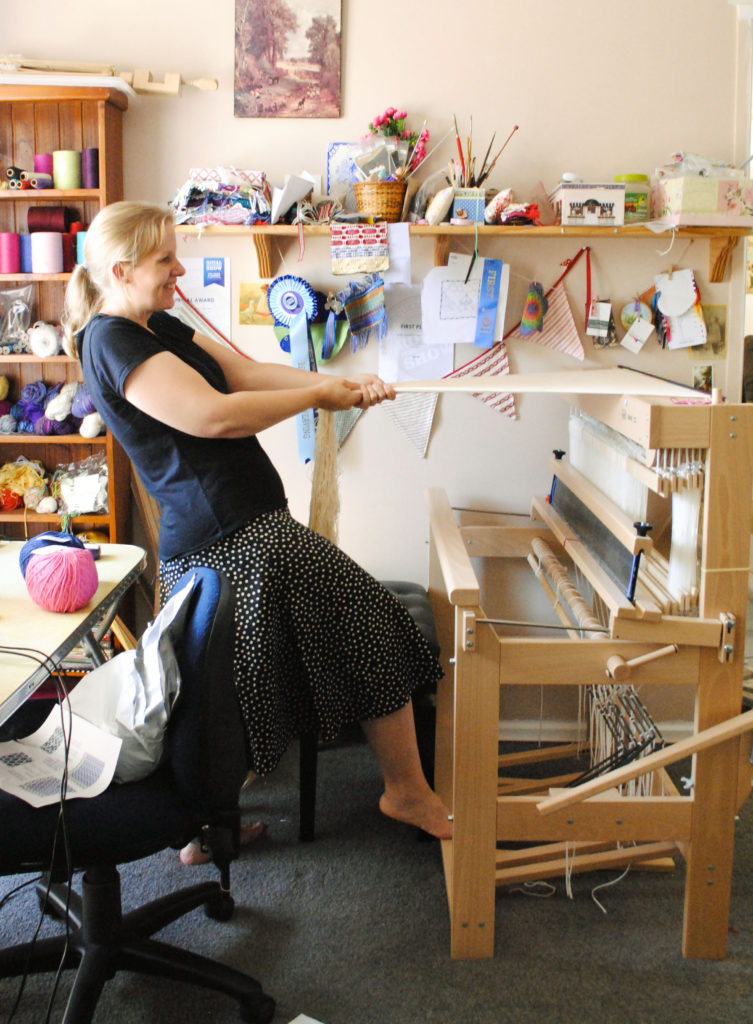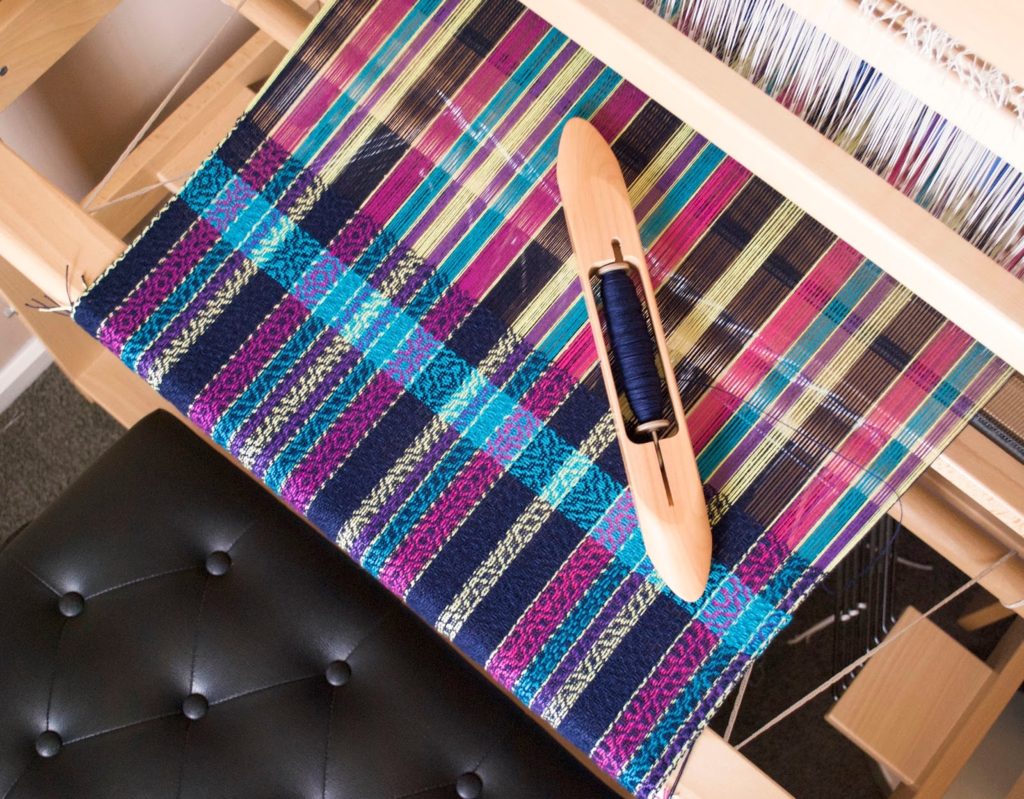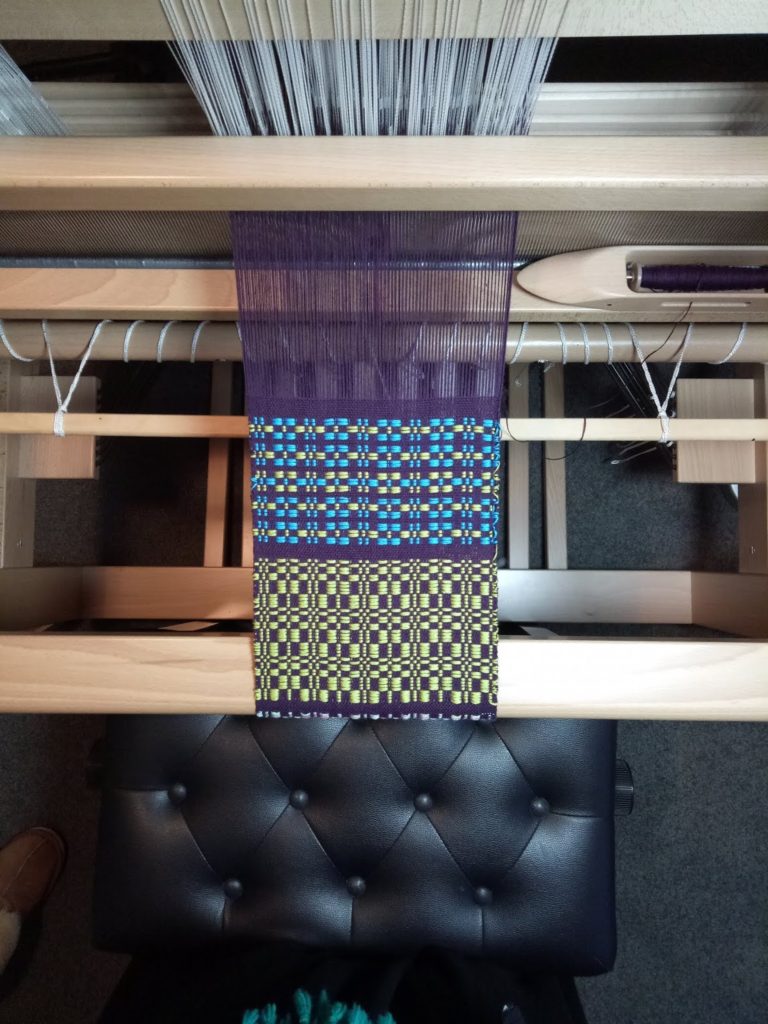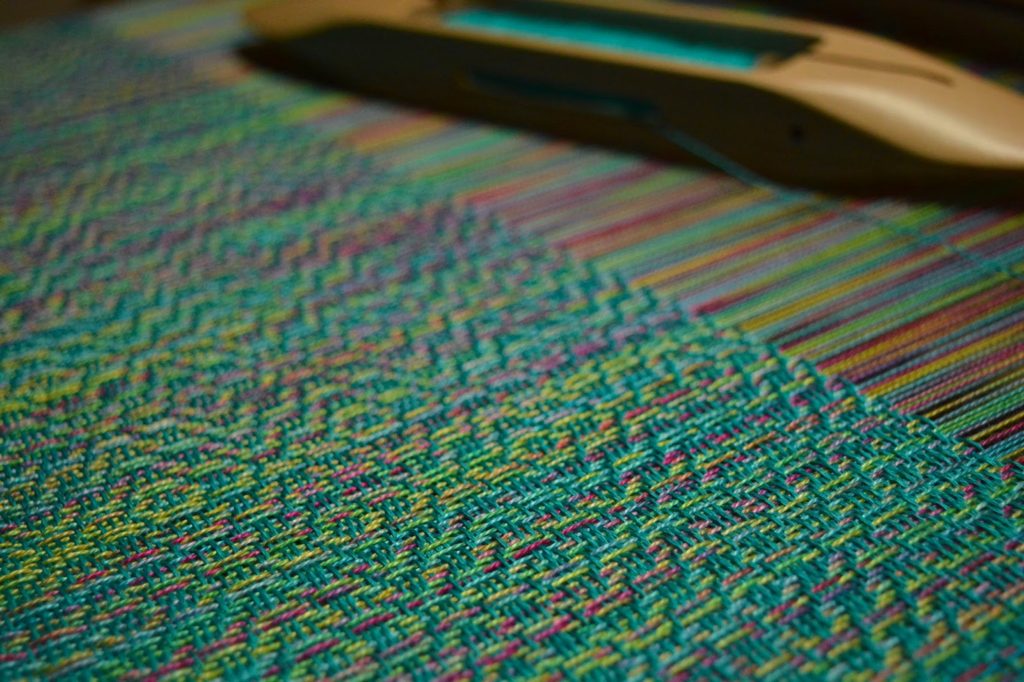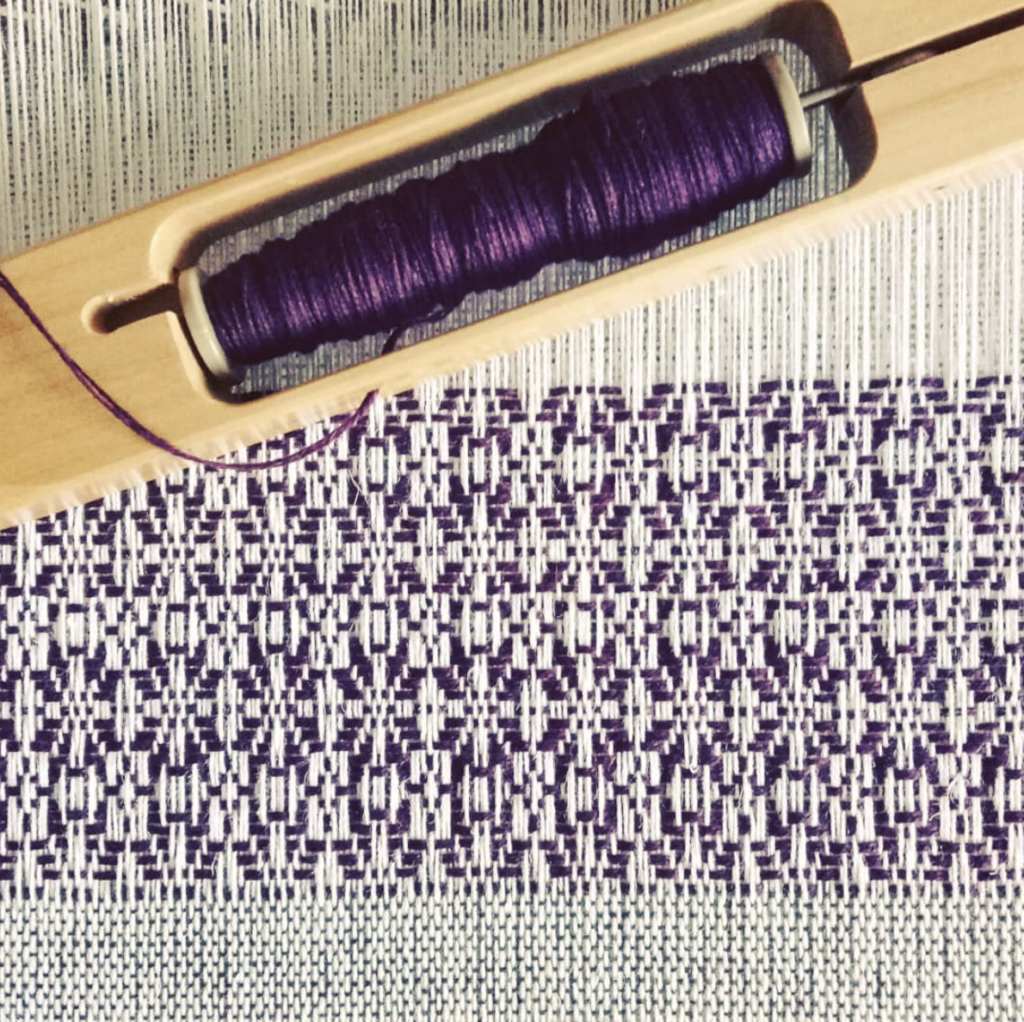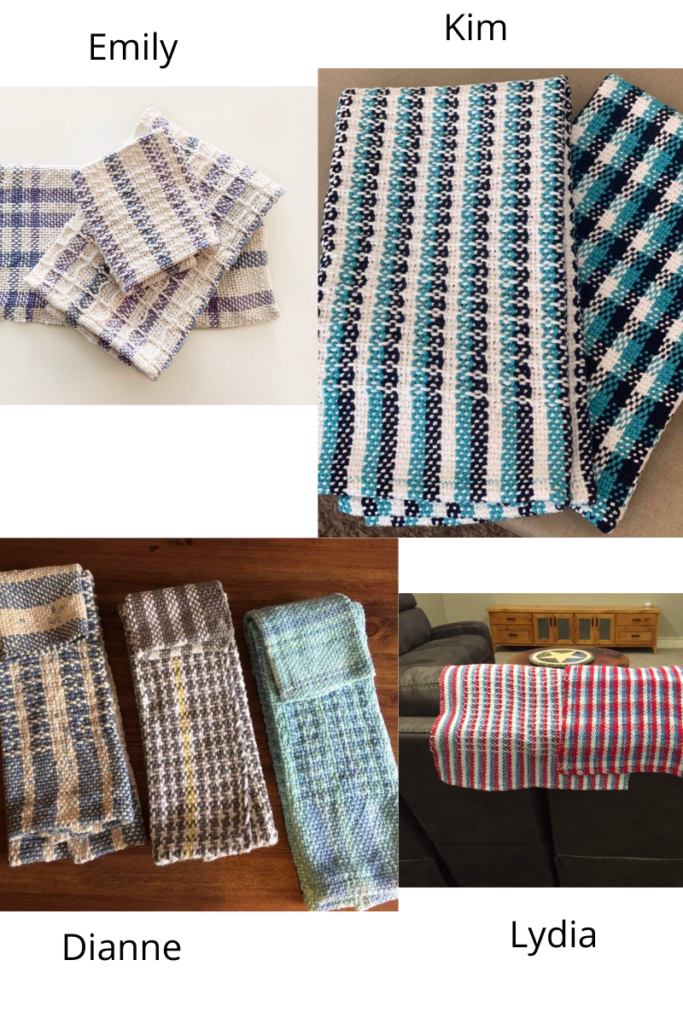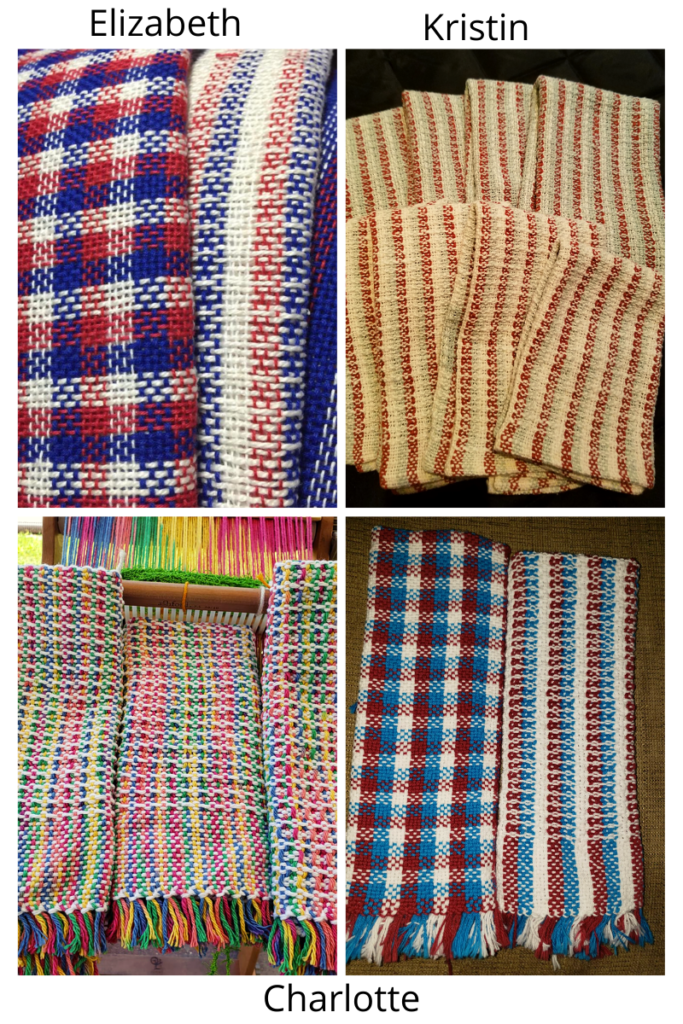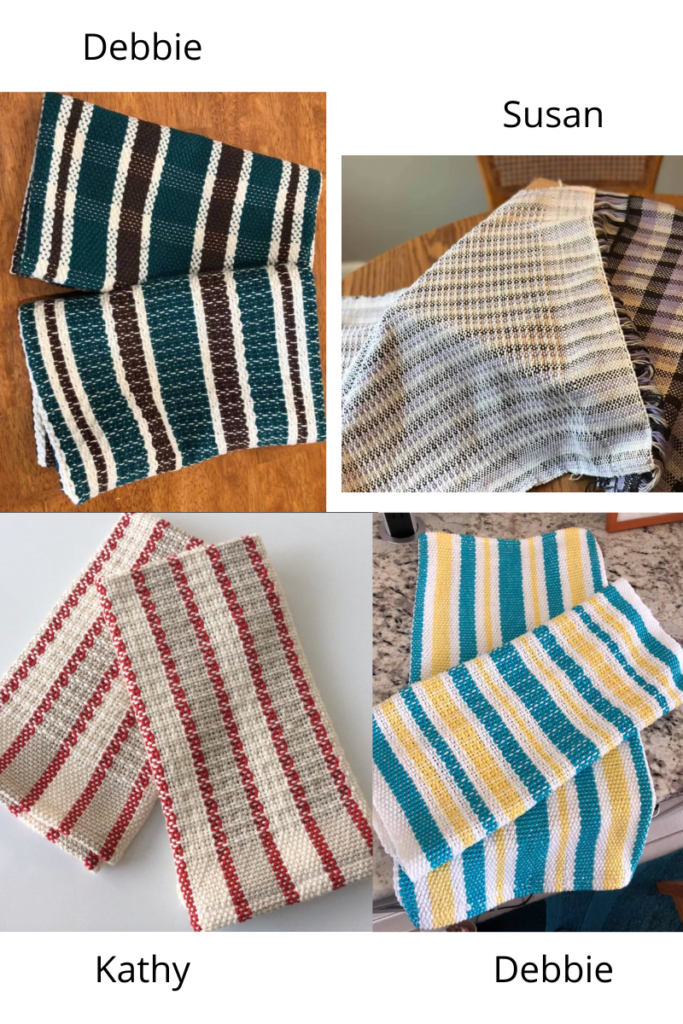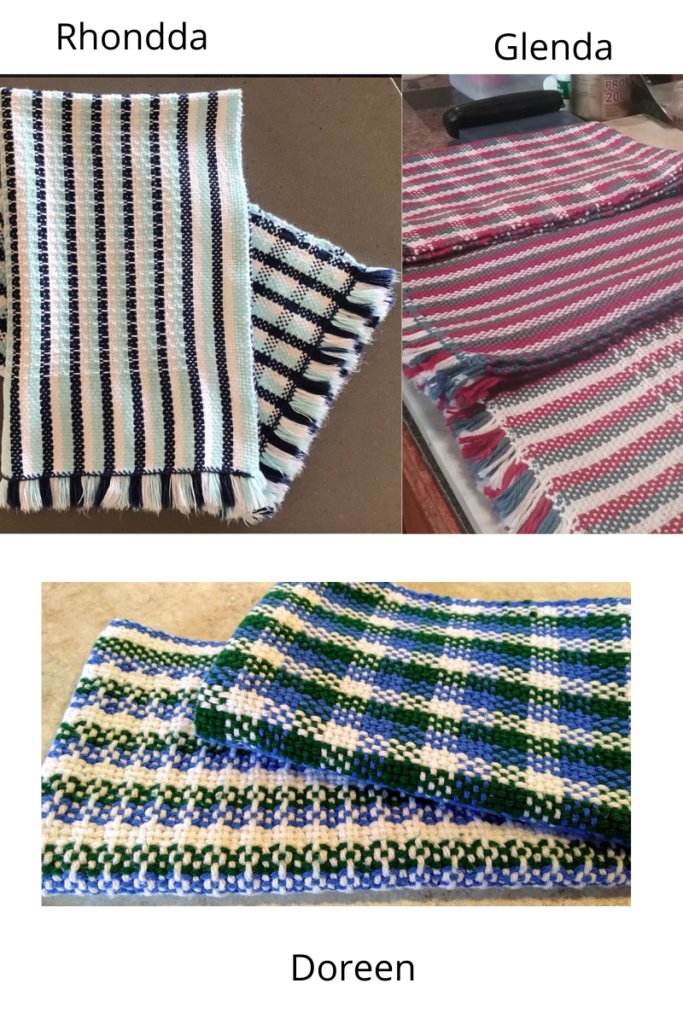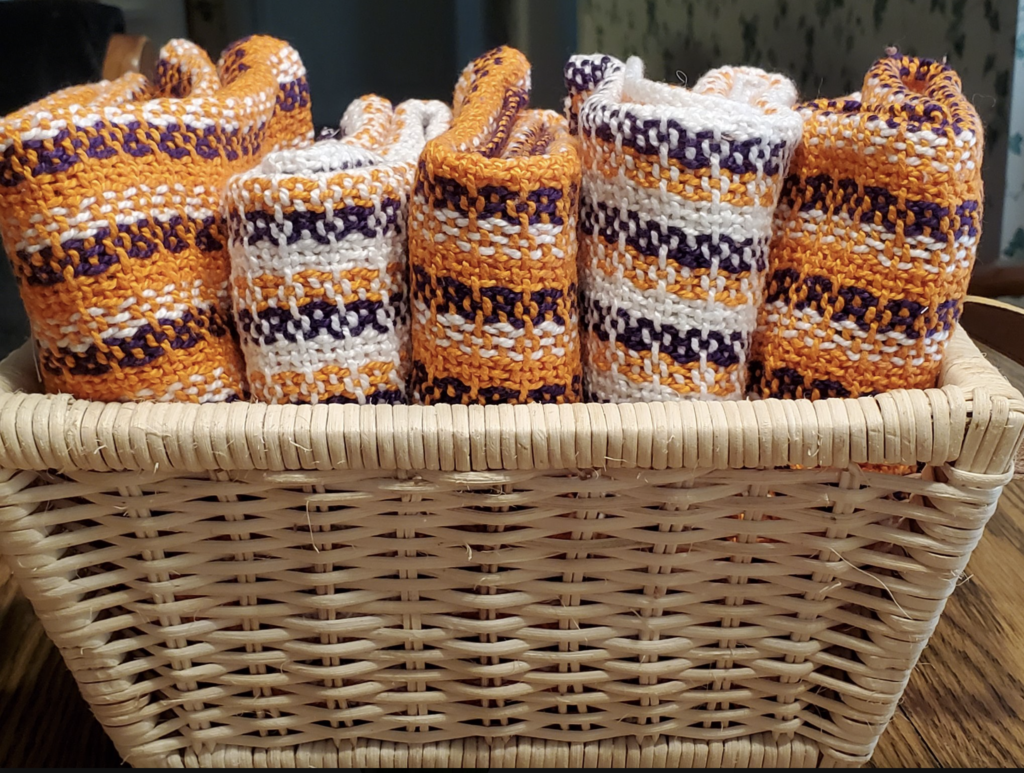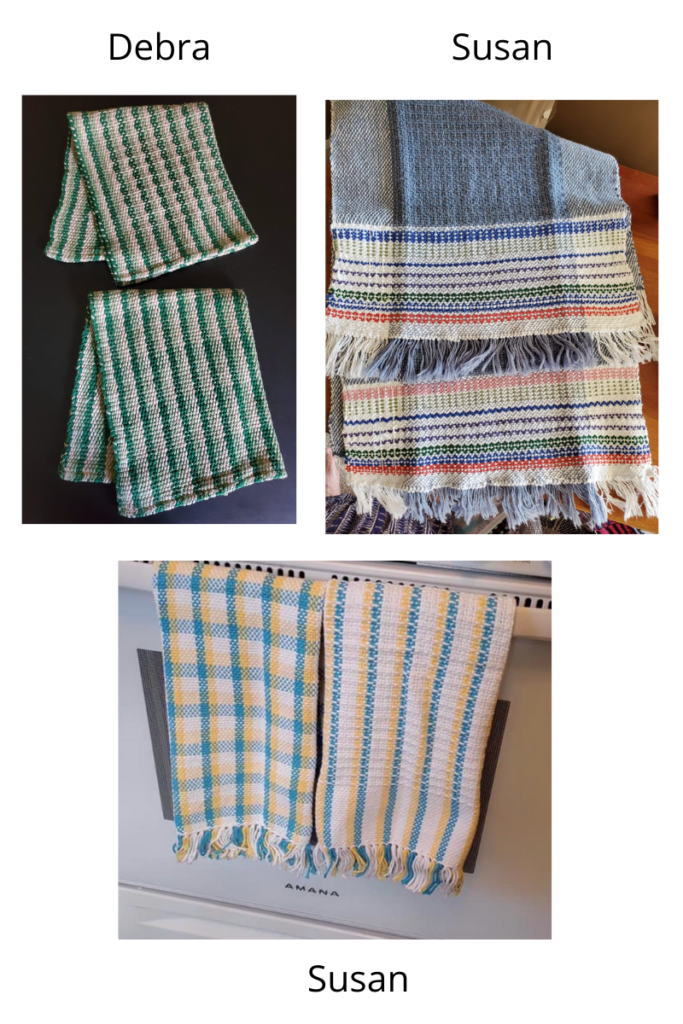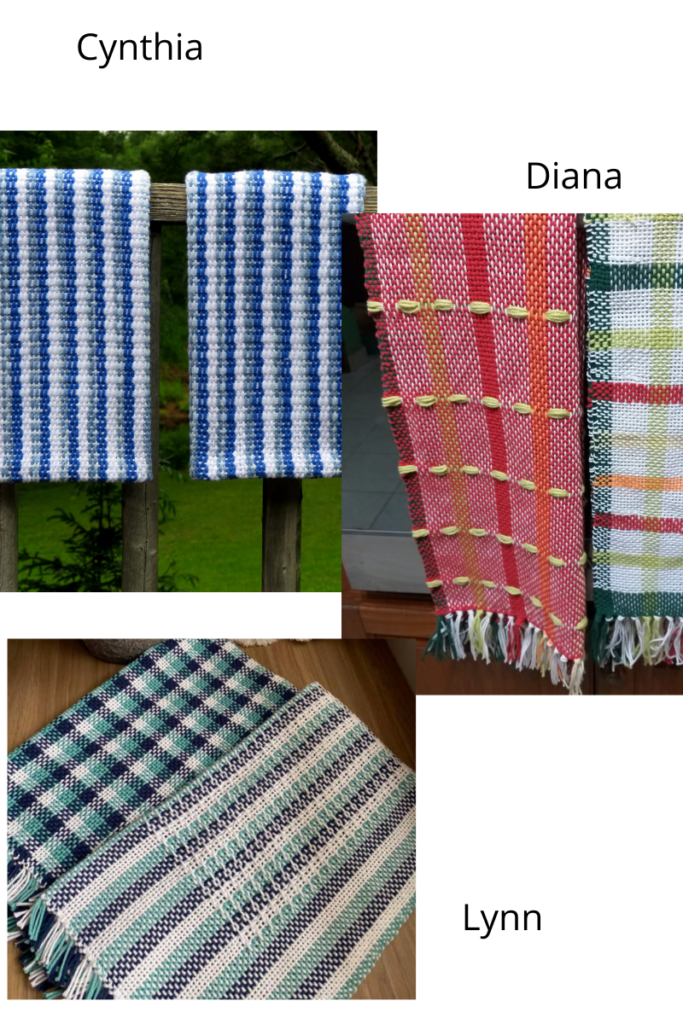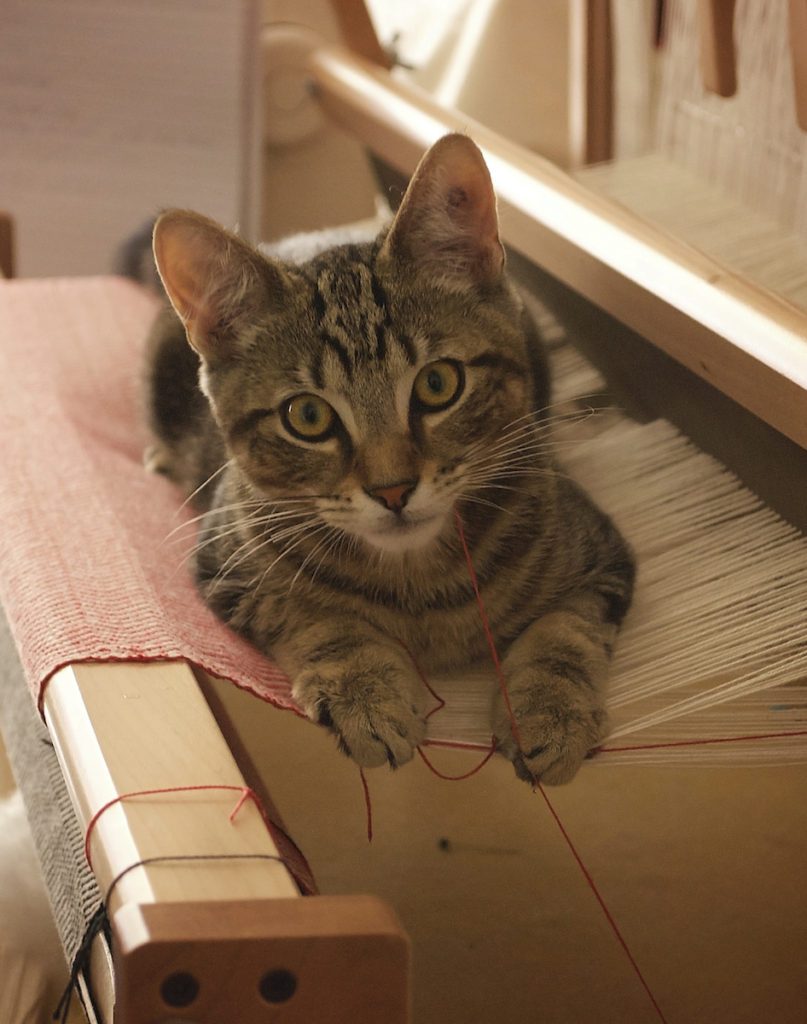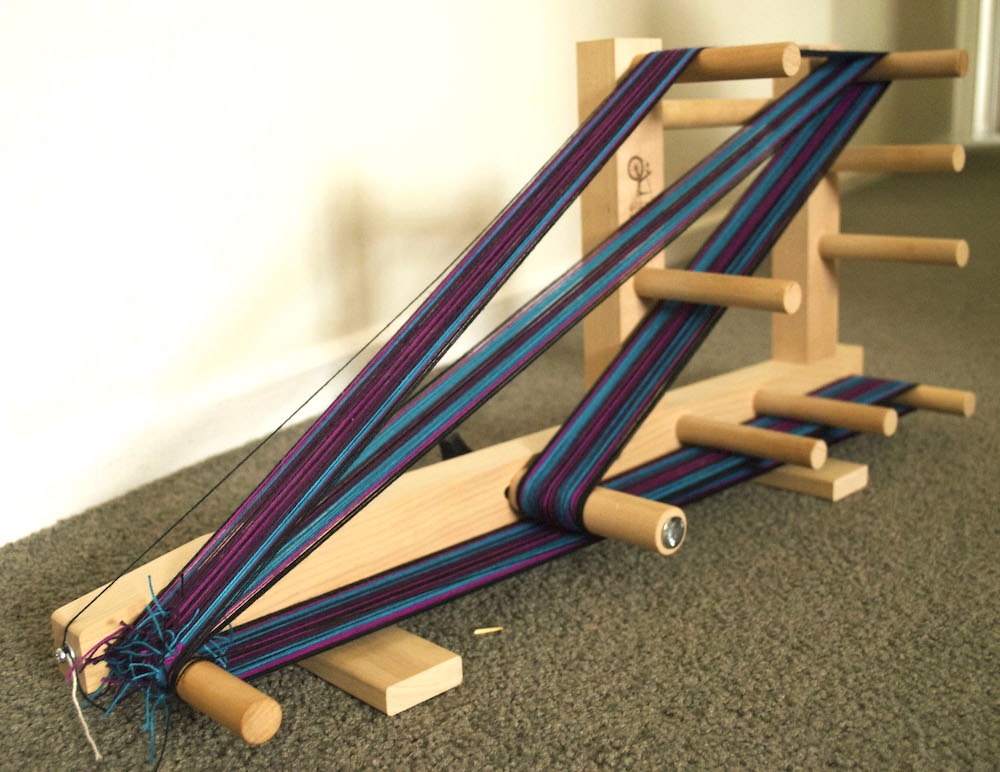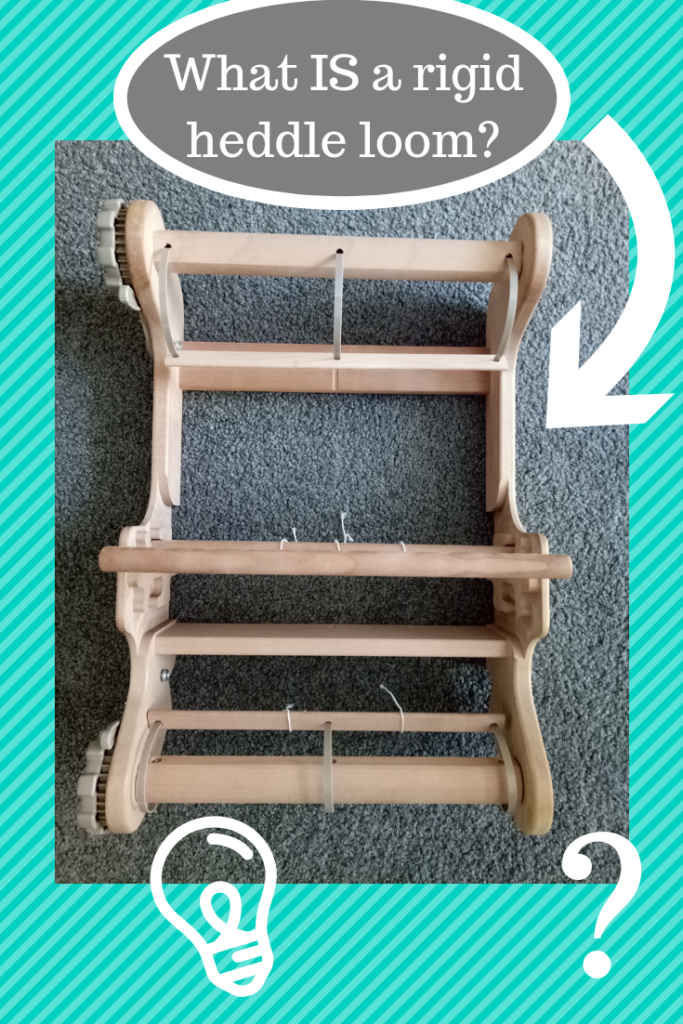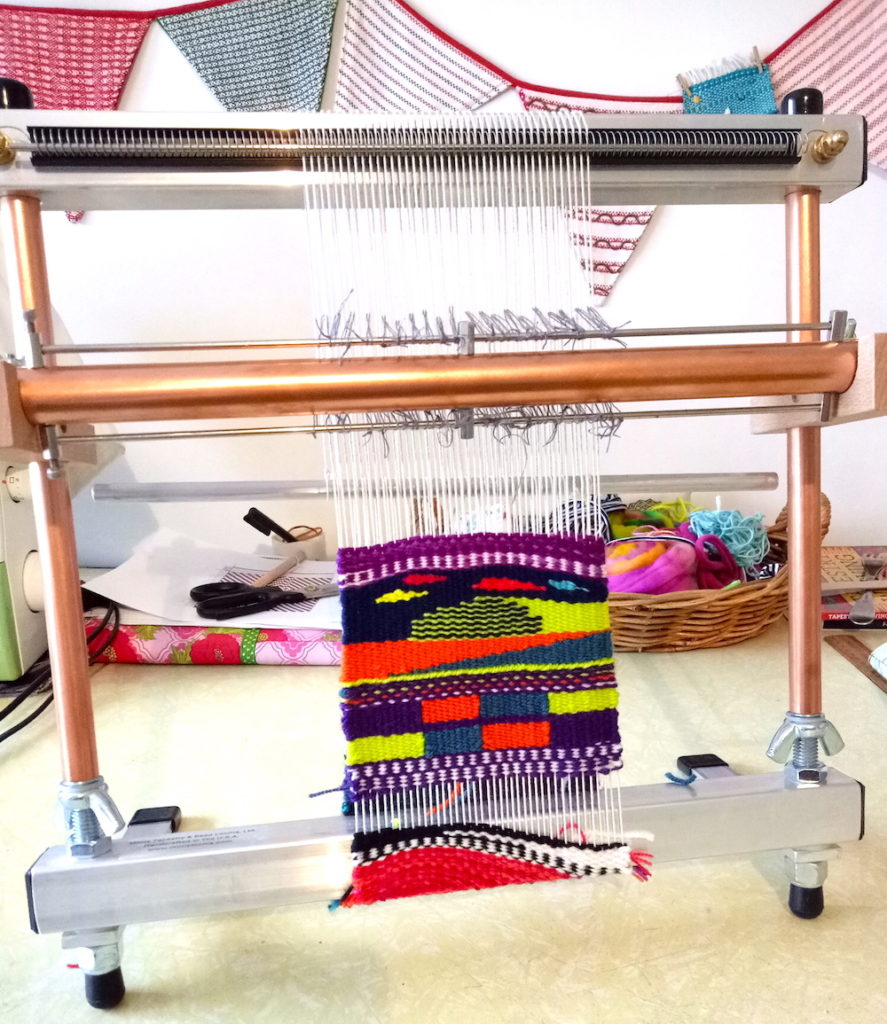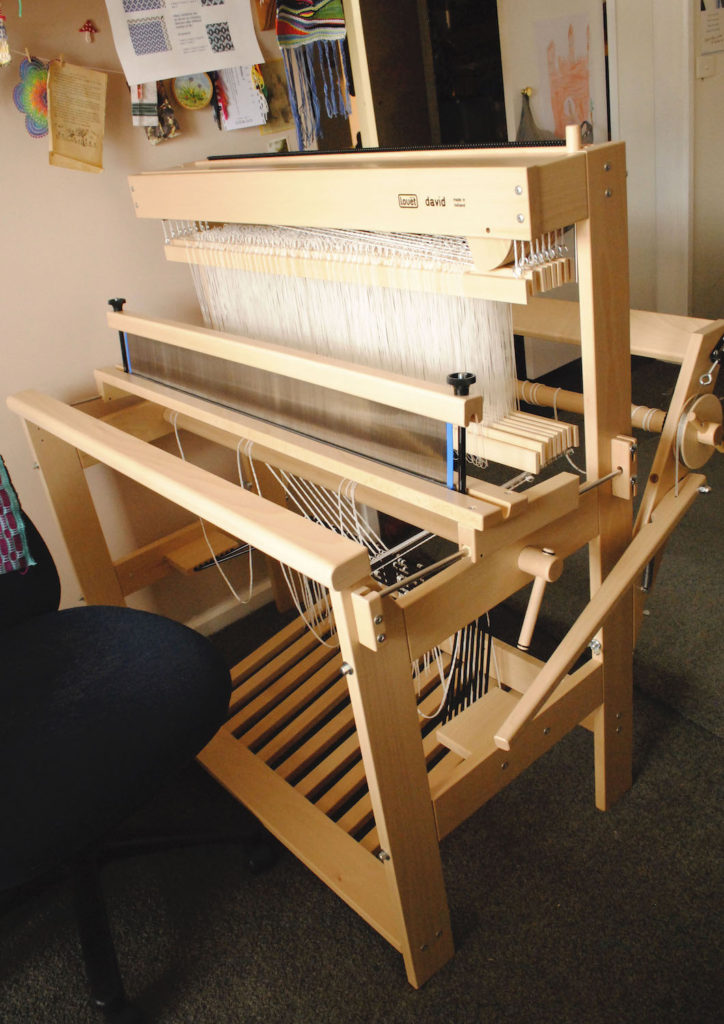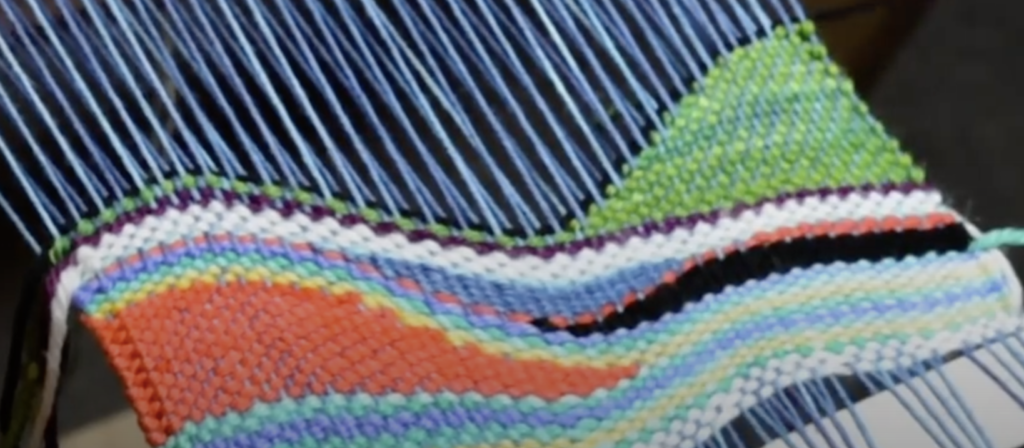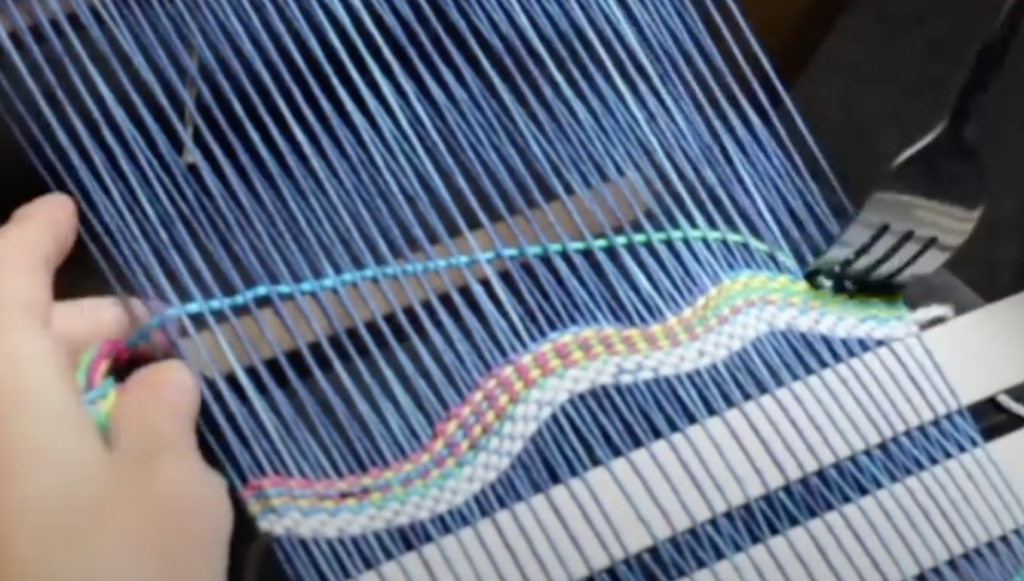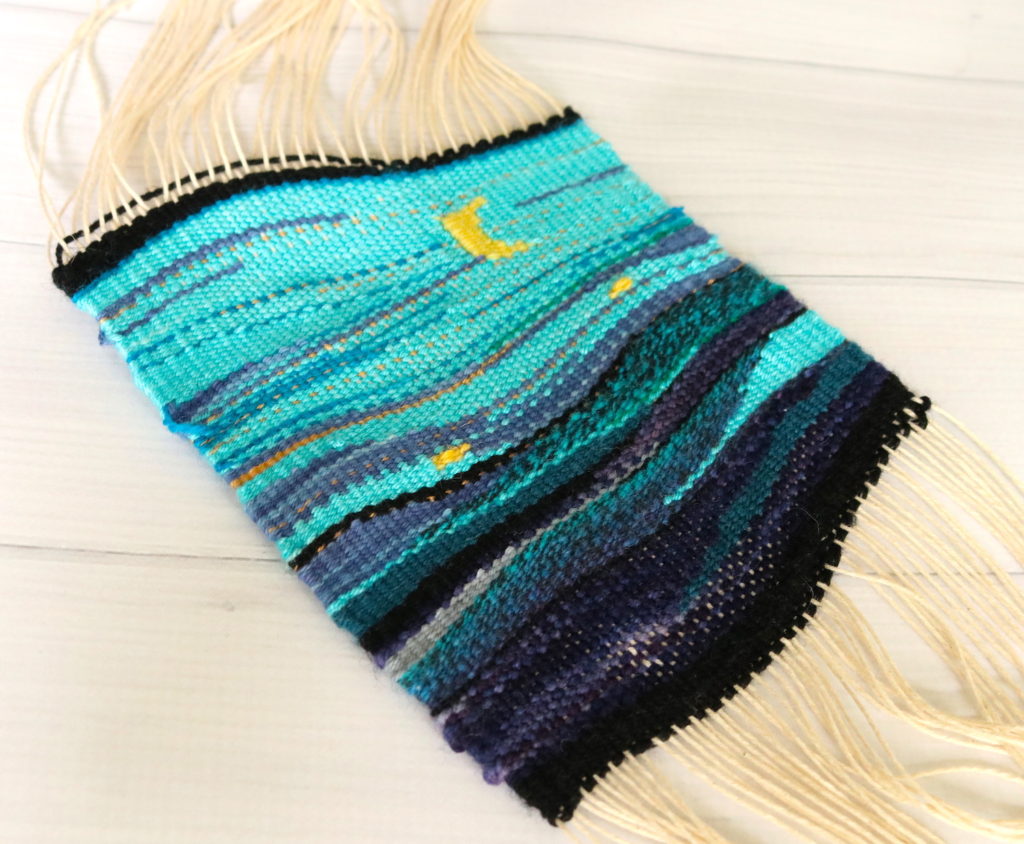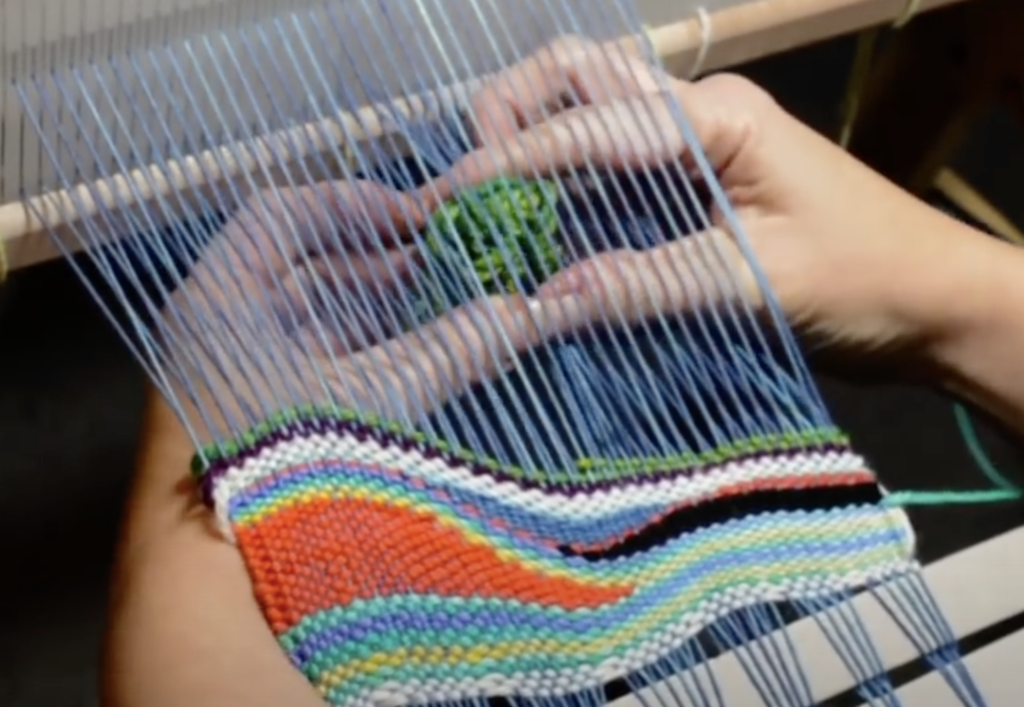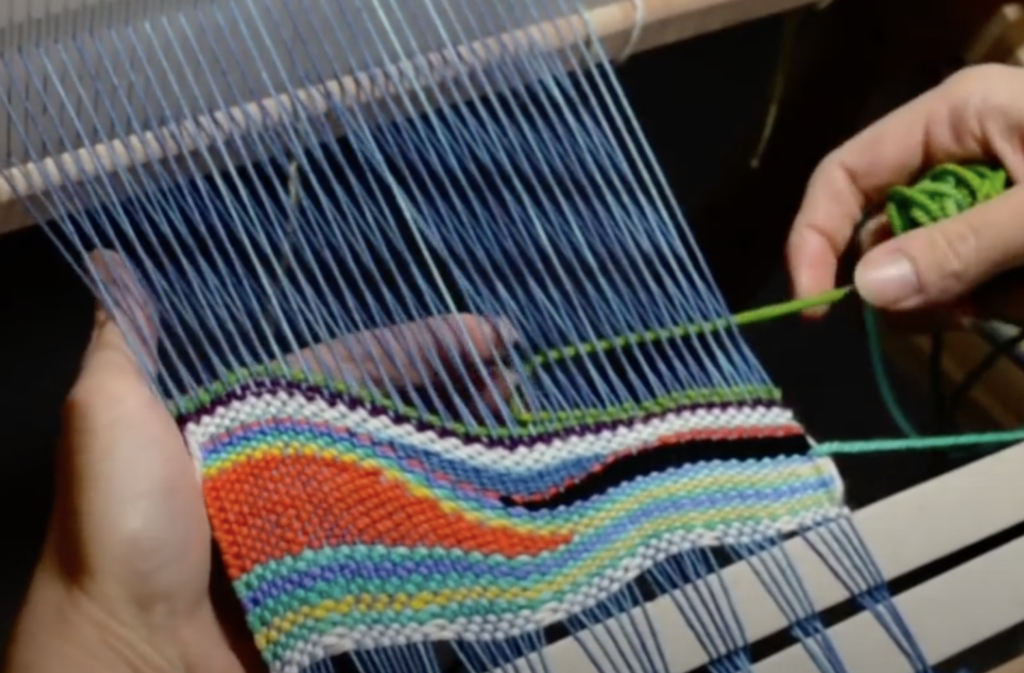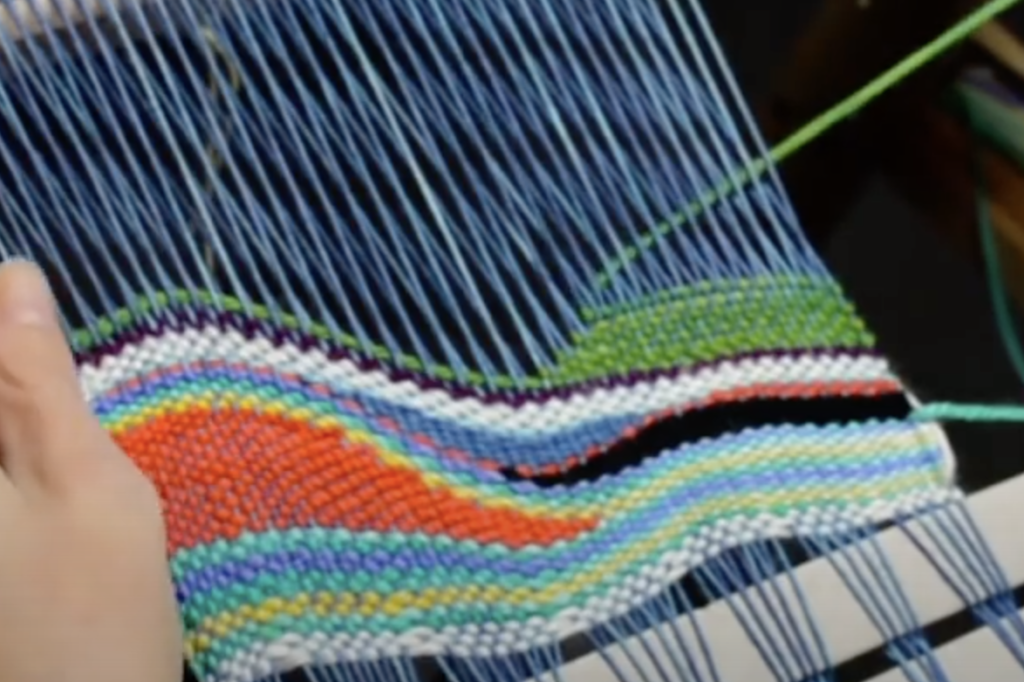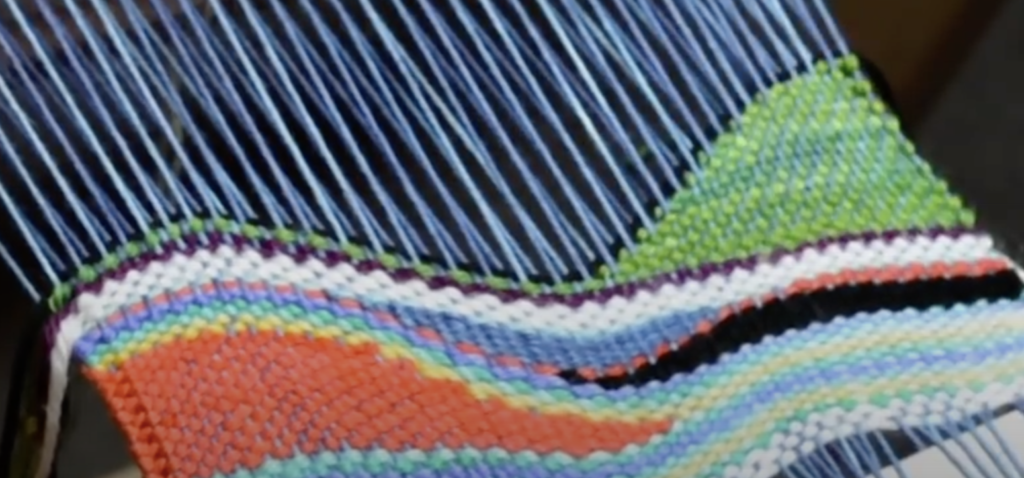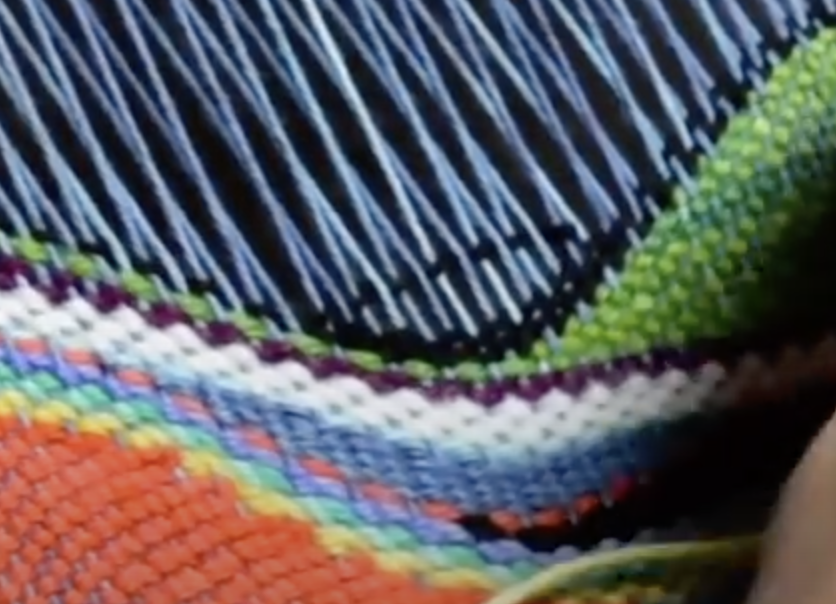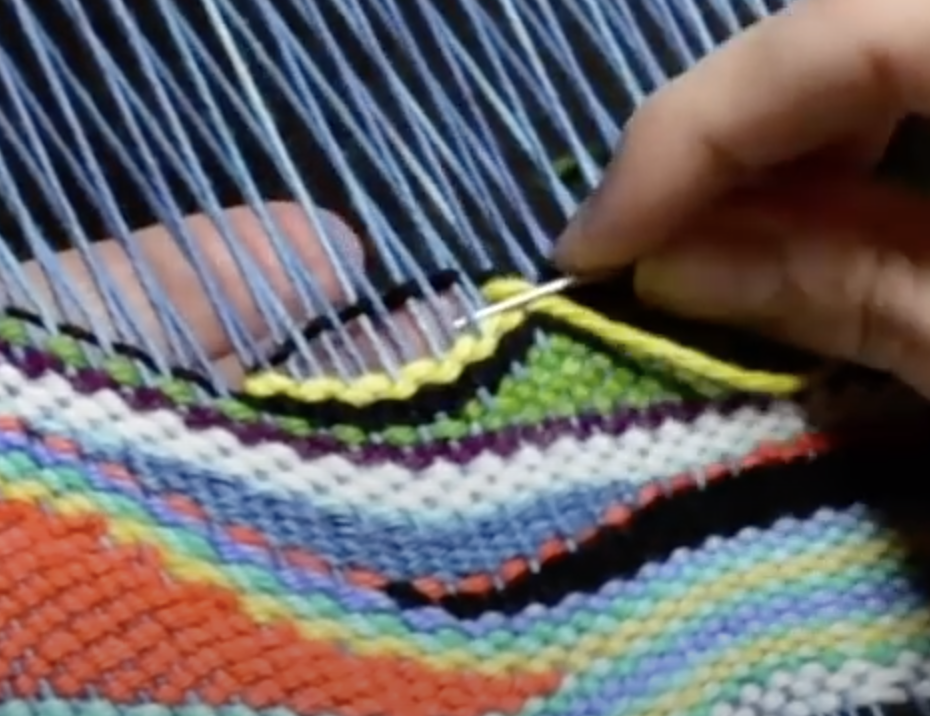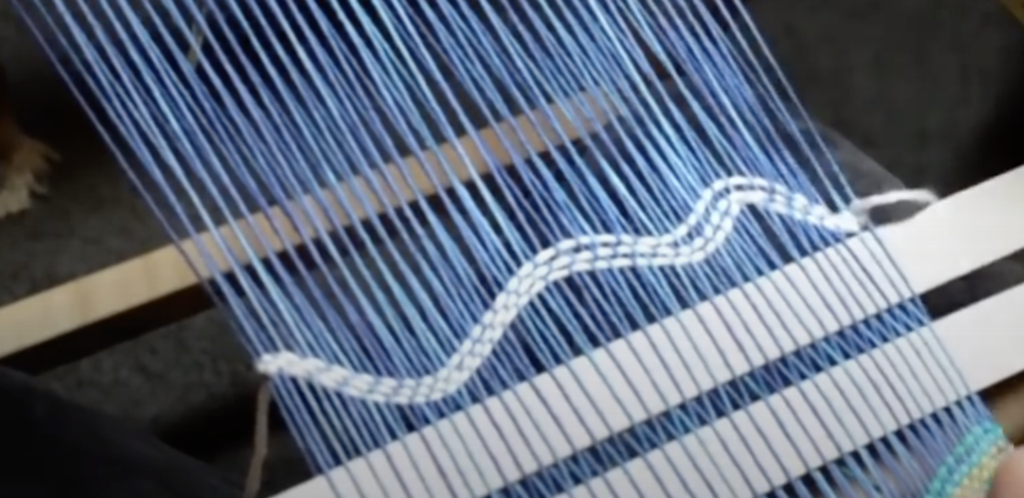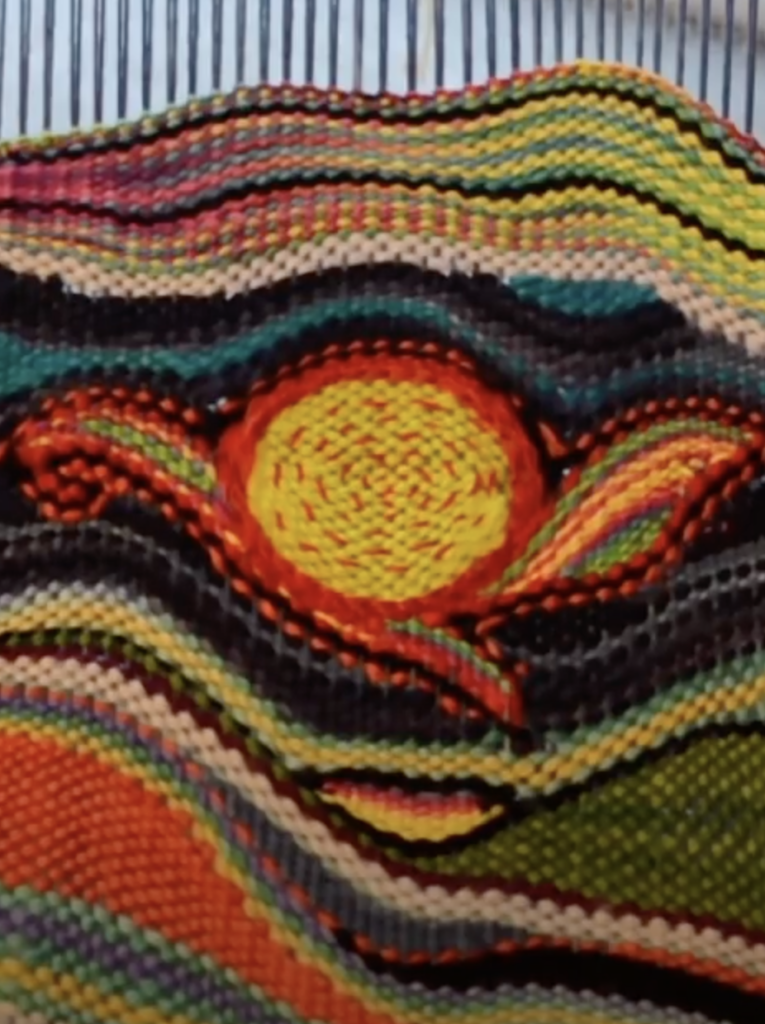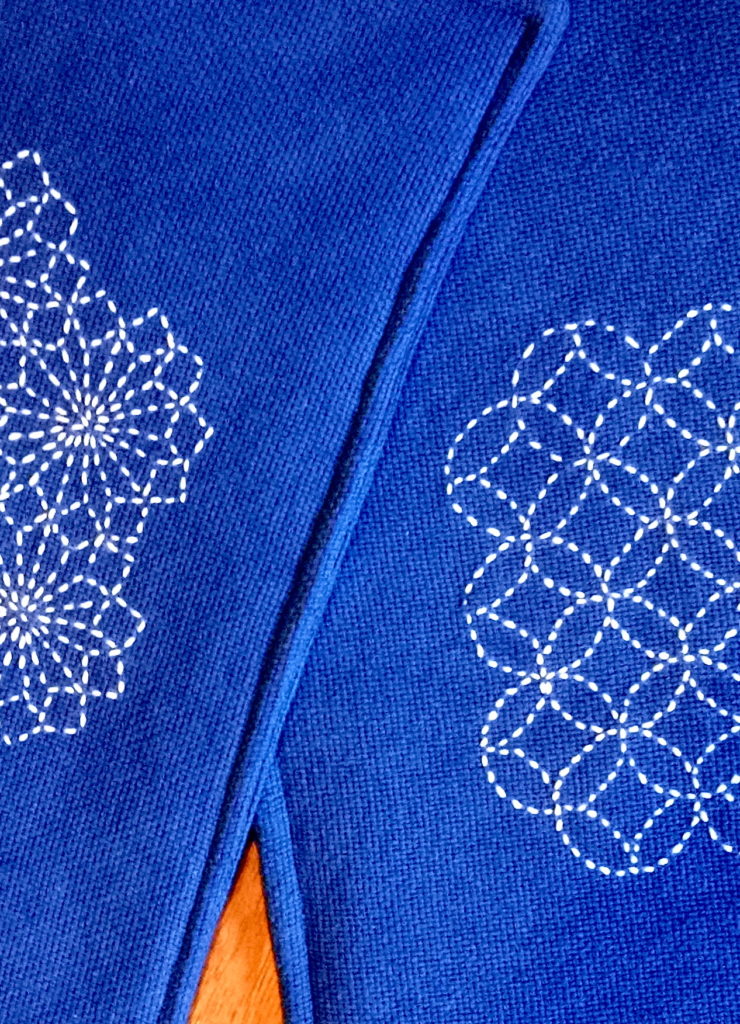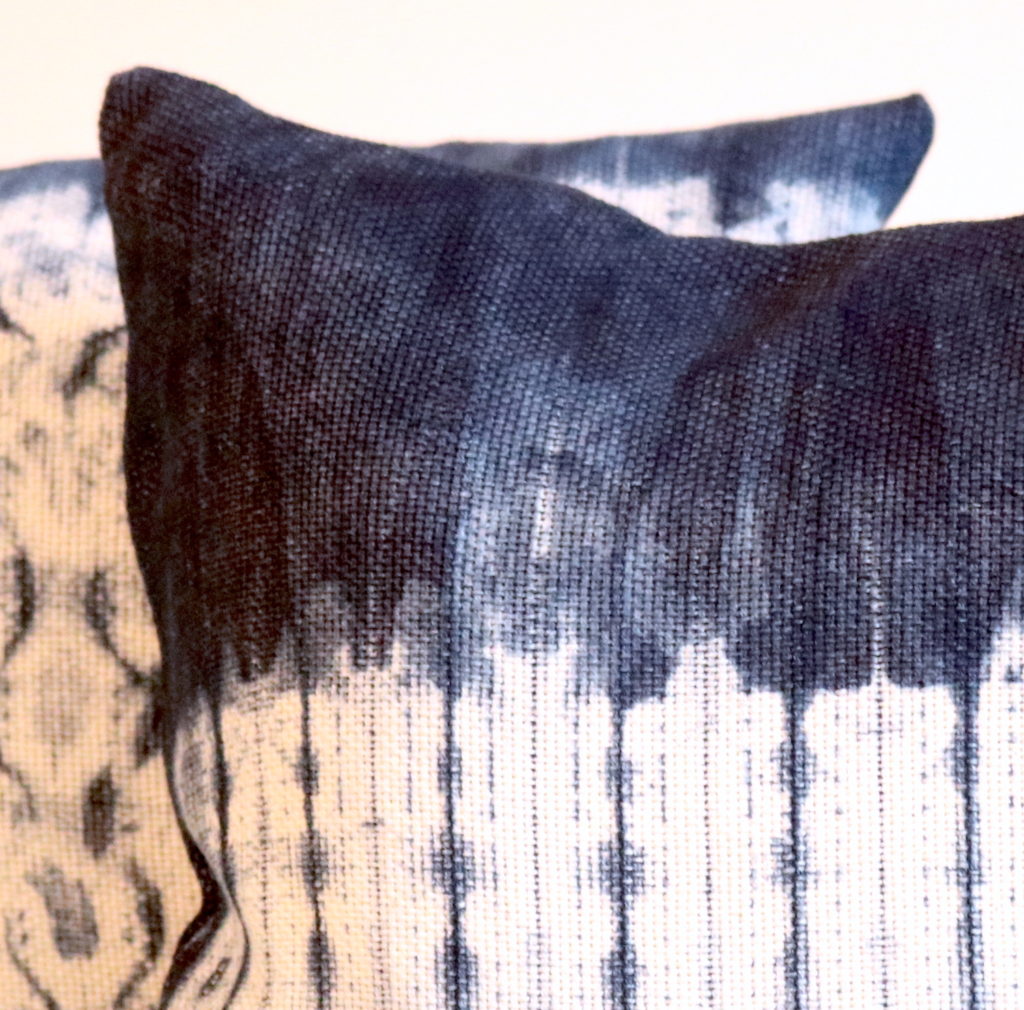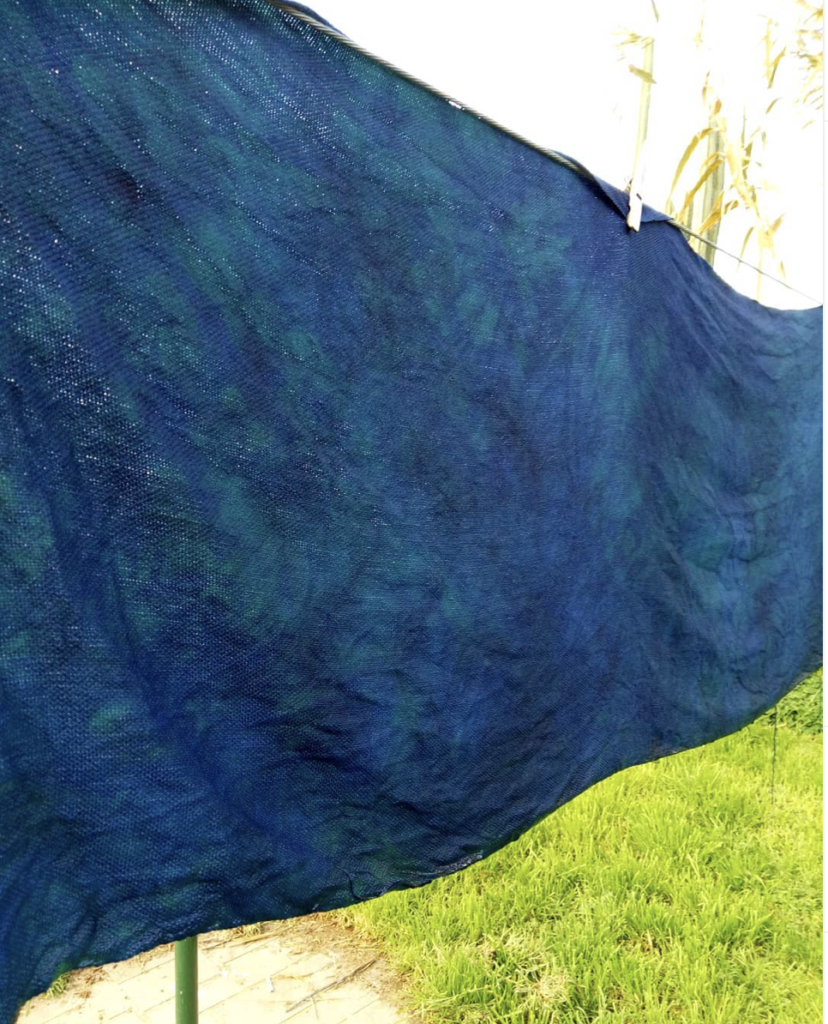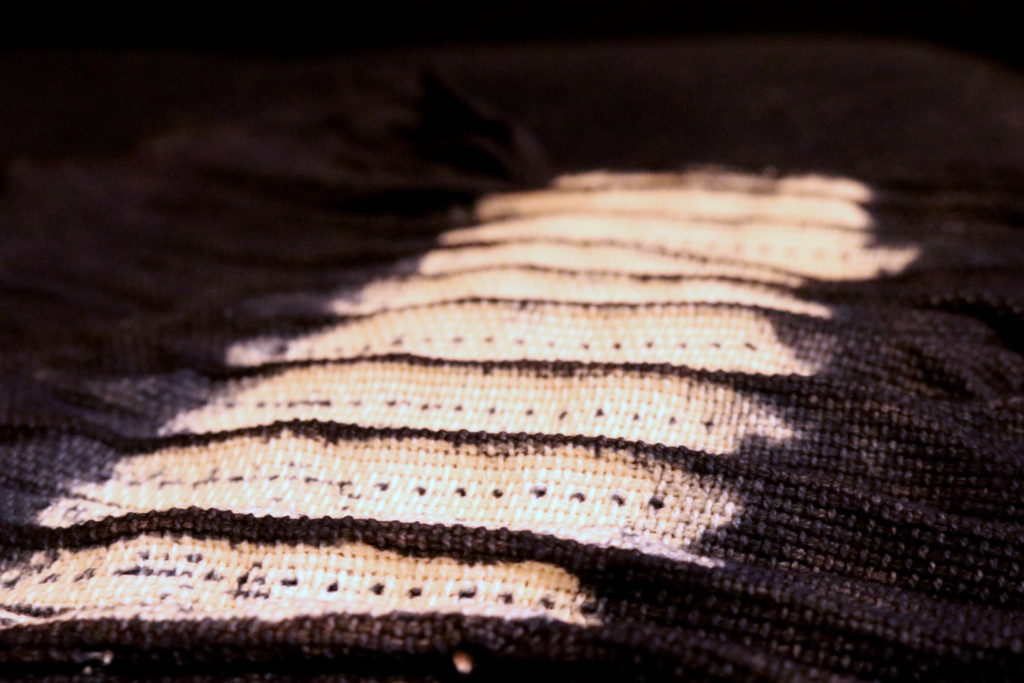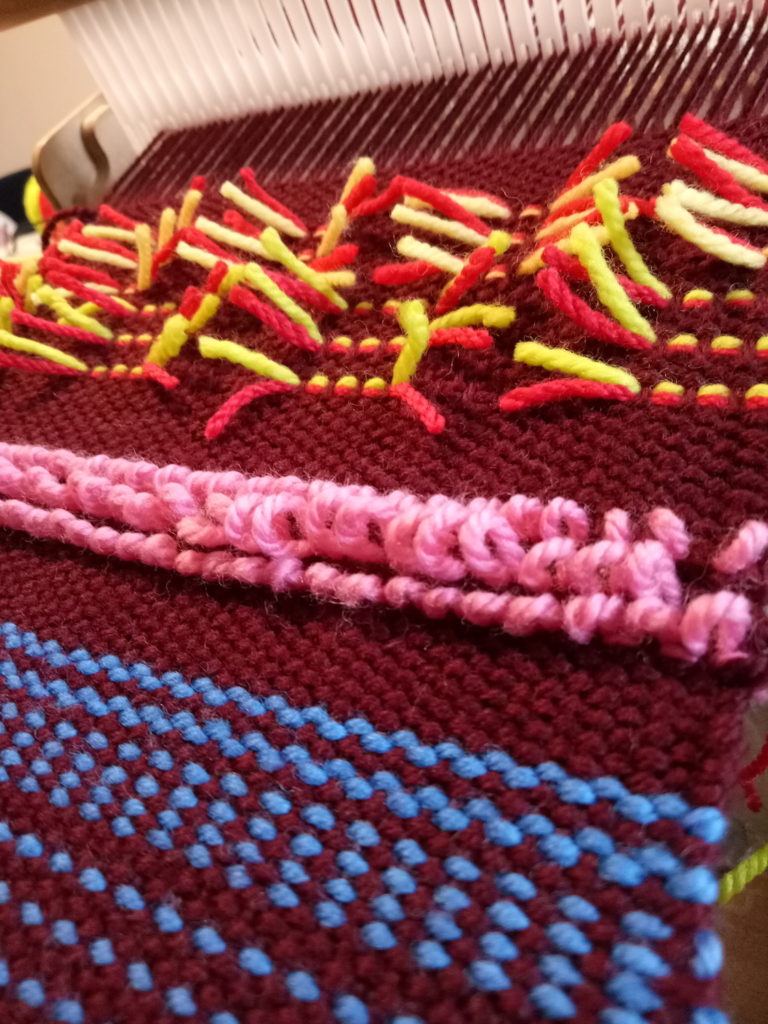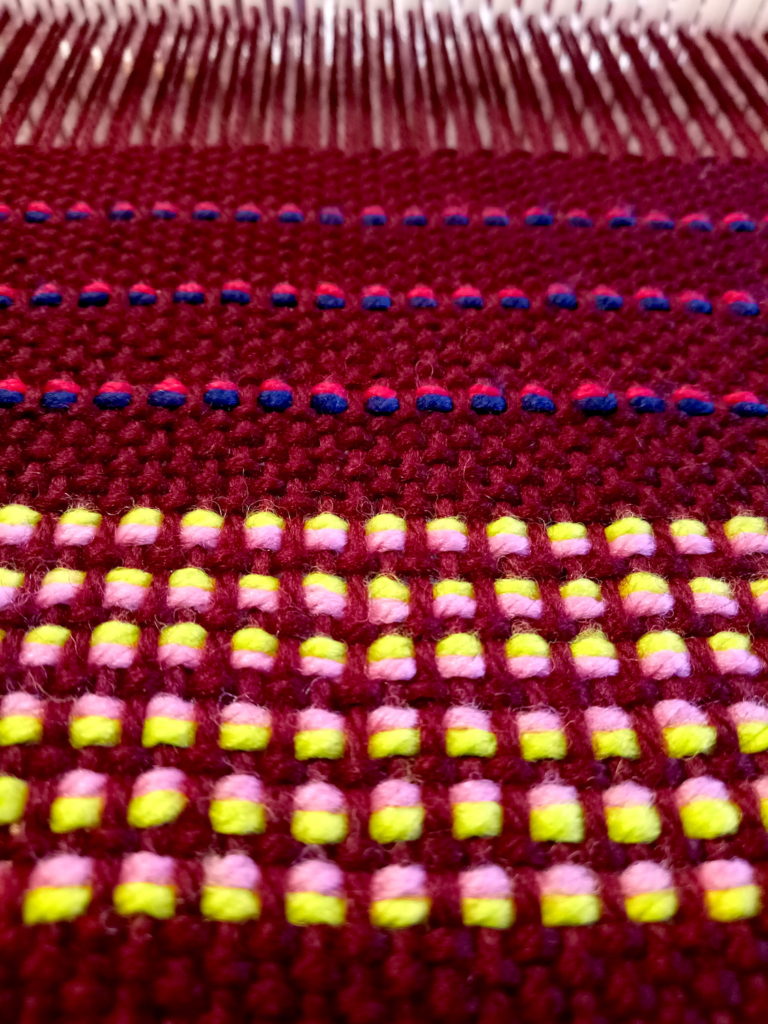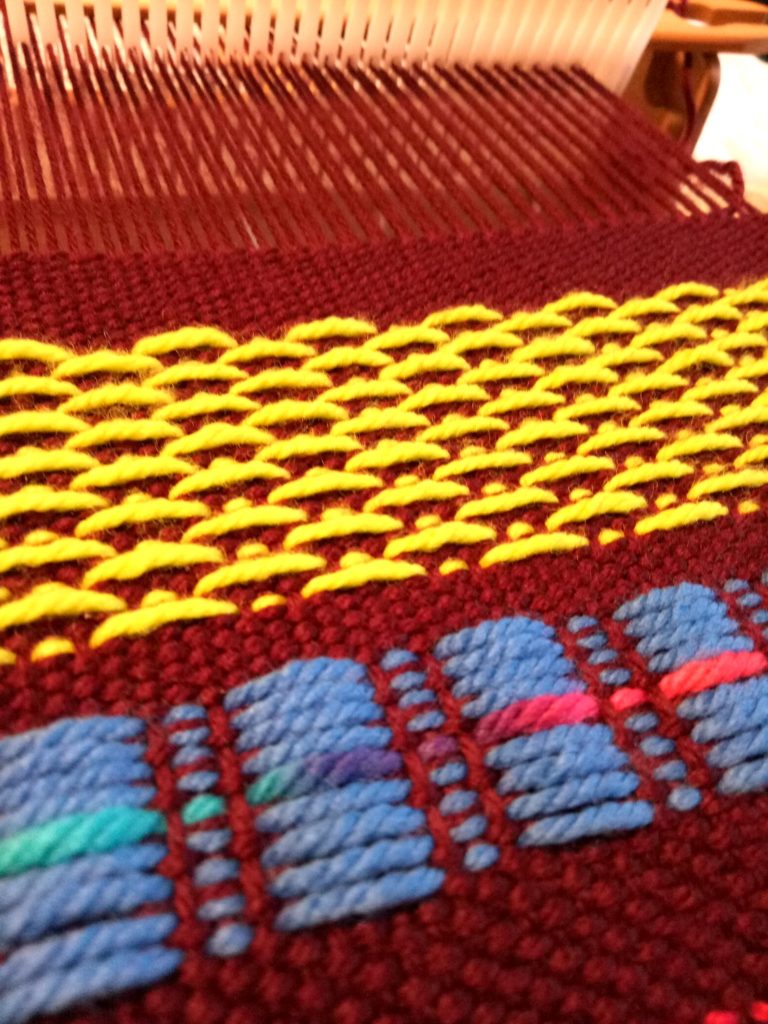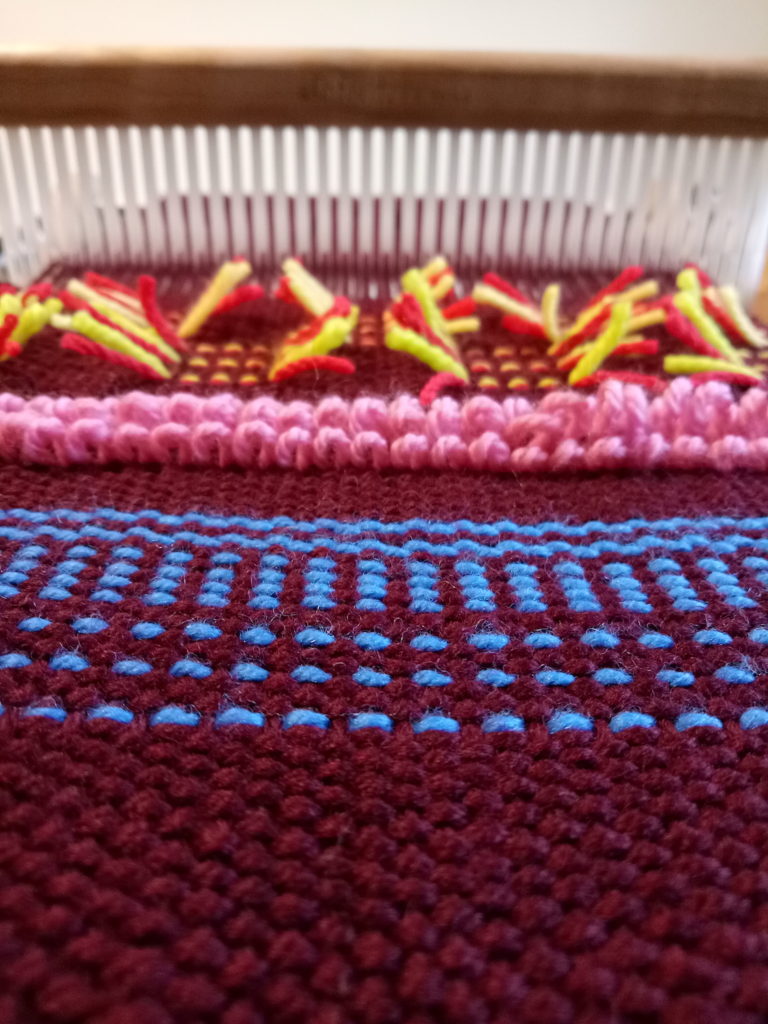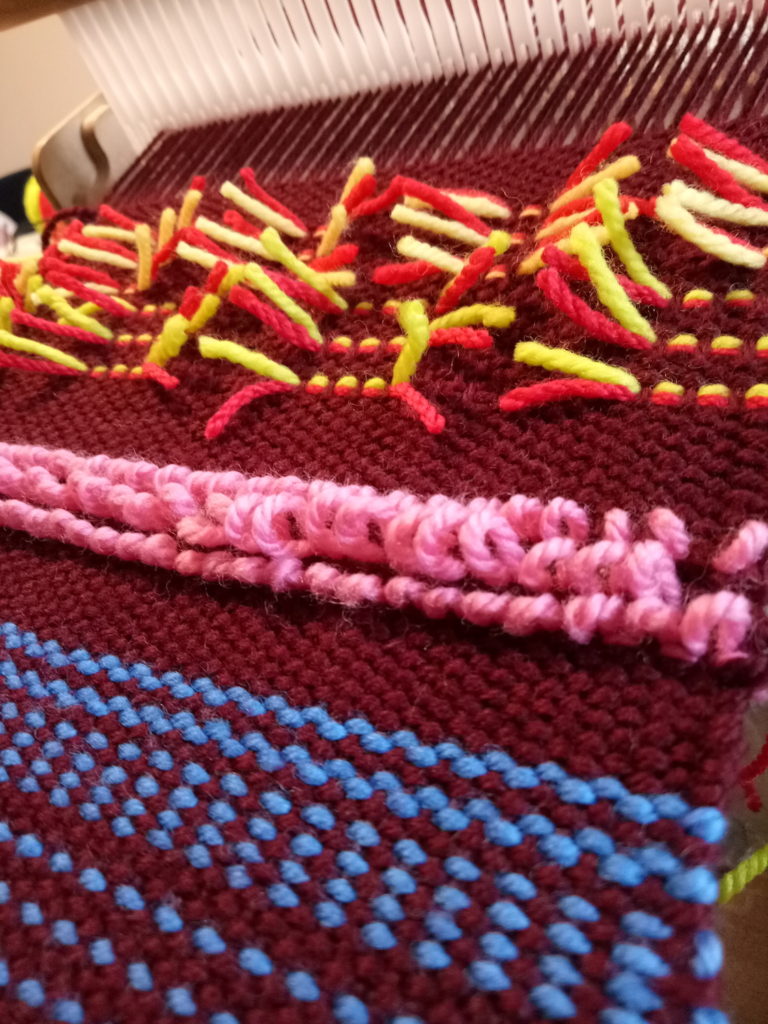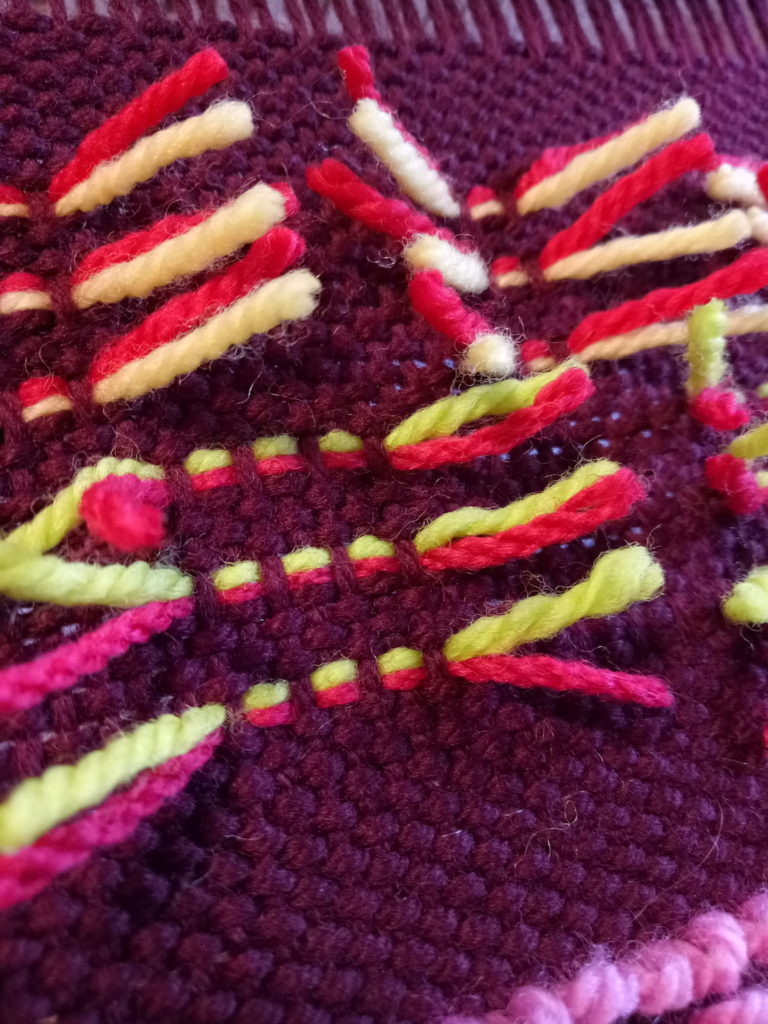Last week we talked about how invaluable a heddle rod is to the rigid heddle weaver.
I showed you how to make string heddles for the heddle rod. If you missed that post, please click here.
*This post contains affiliate links. For more information, please see my disclosure policy.
Now that we know how to make our own string heddles, we can learn how we use them on a heddle rod.
The actual rod needs to be wider than the width of the piece you’re weaving. It can be either flat or round. It should be fairly lightweight and not so large that it is difficult to pick up. It should be smooth but not slippery.
For this tutorial I’m using a smooth but not lacquered wooden dowel measuring 9mm (3/8 of an inch) around. The dowel was purchased at a local hardware store.
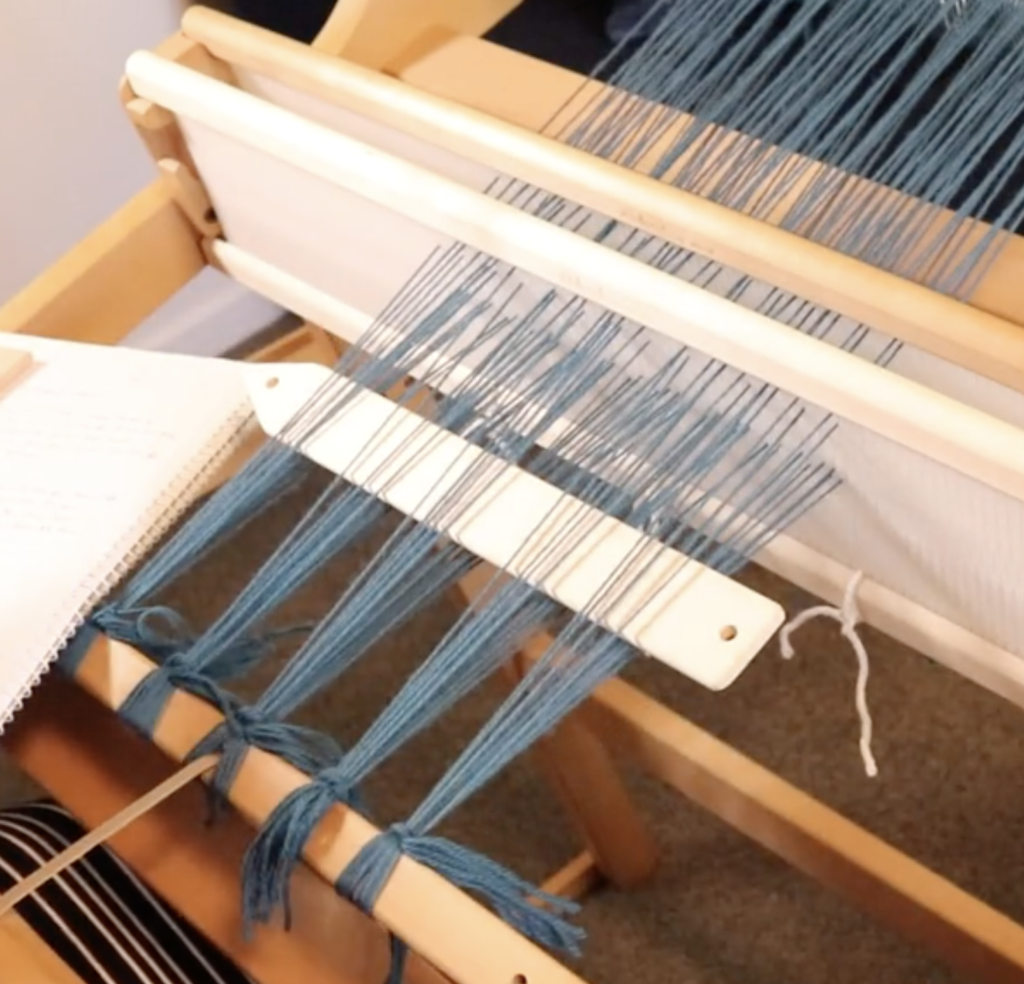
Begin by picking up the threads you want to place on the heddle rod according to the pattern or instructions you’re using. It is easiest to pick up the threads in front of the heddle first using a pick up stick. Make sure your heddle (or if you’re using more than one, heddles) are in the down position. This brings slot threads up, and it’s the slot threads we want to pick up.
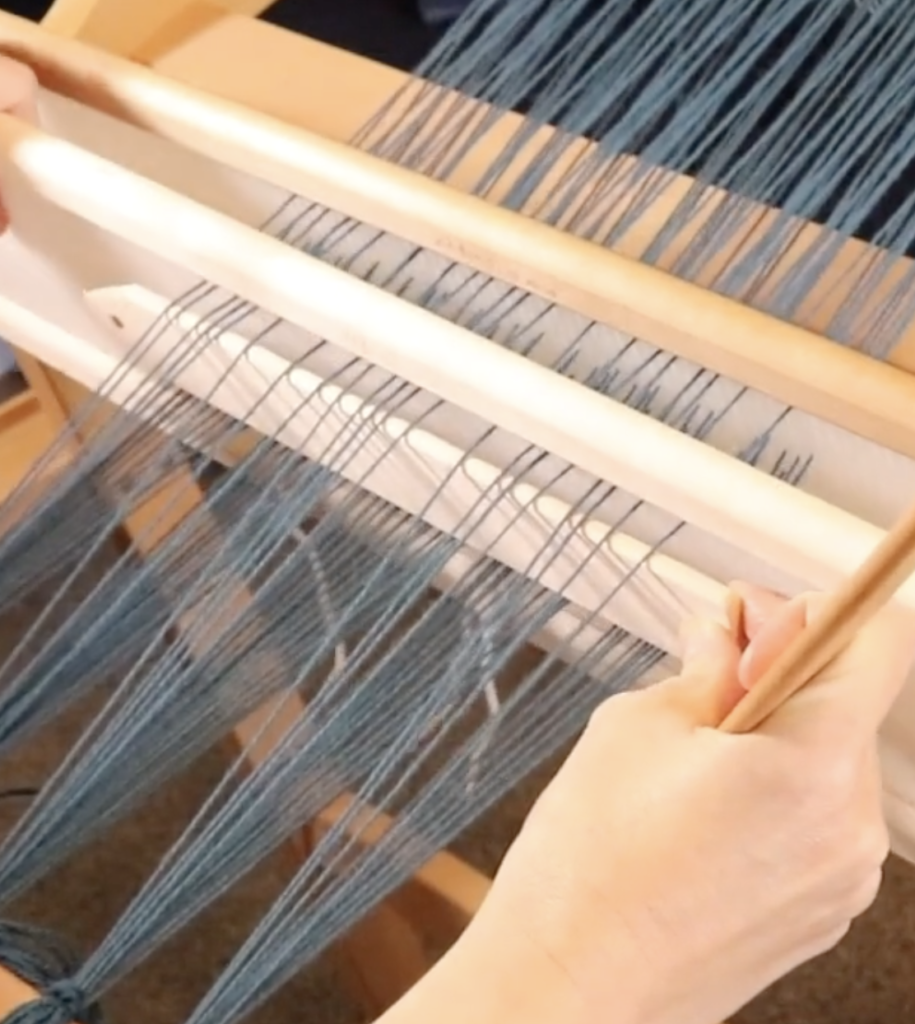
Once your threads are picked up, slide the front stick towards the heddle and place it on it’s edge. This props up the heddle rod threads at the back of the heddle and differentiates them from all the other threads.
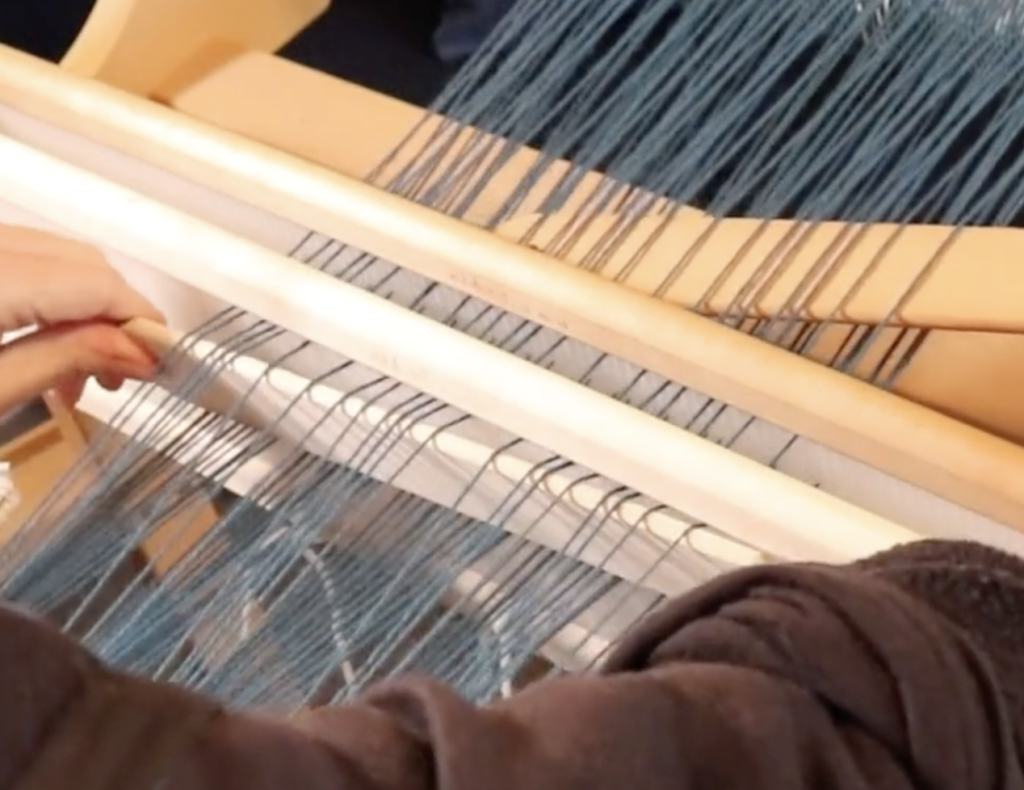
Now you can insert another pick up stick (or stick shuttle if you don’t have the extra pick up stick) into the shed that has been created by the propped up threads behind the heddle/s.
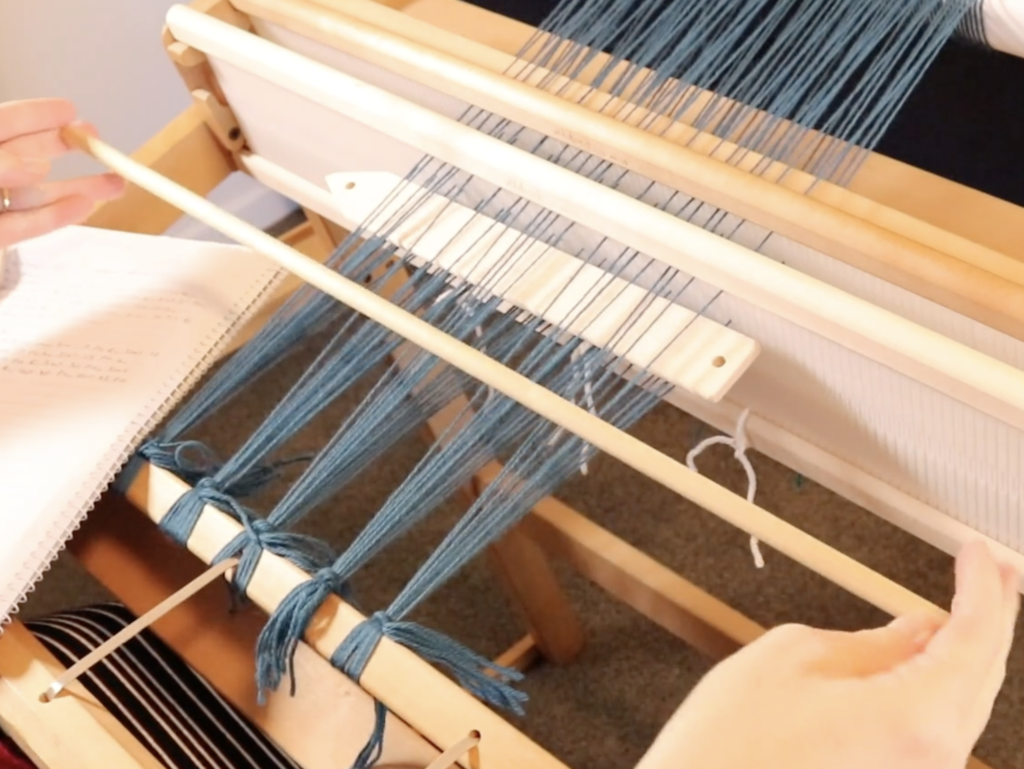
You will need your piece of dowel or whatever you’re using for the heddle rod plus your string heddles handy.
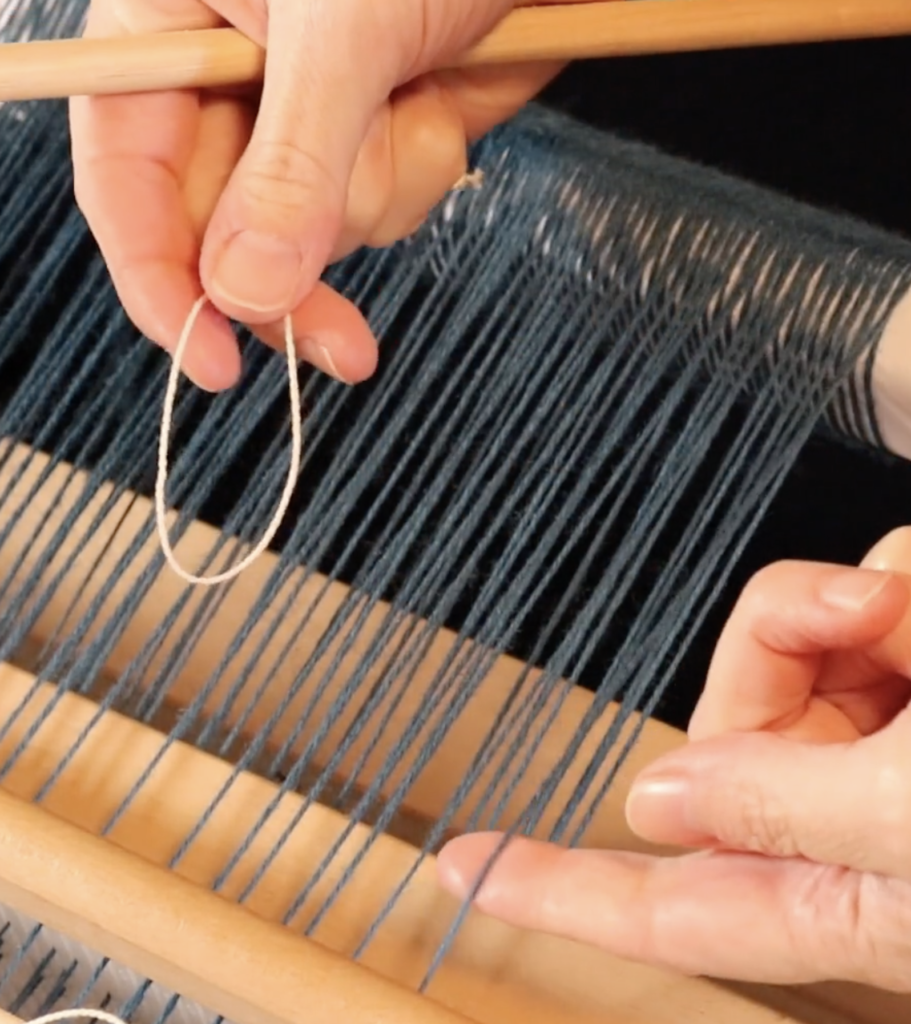
You may find it easier to sit or stand behind the loom for this next part. Working from either right to left (it makes no difference) pick up the threads in order from one side to the other. Keep your pick up stick in place as your visual guide – you can clearly see which threads need to be picked up. Have a string heddle ready at this point.
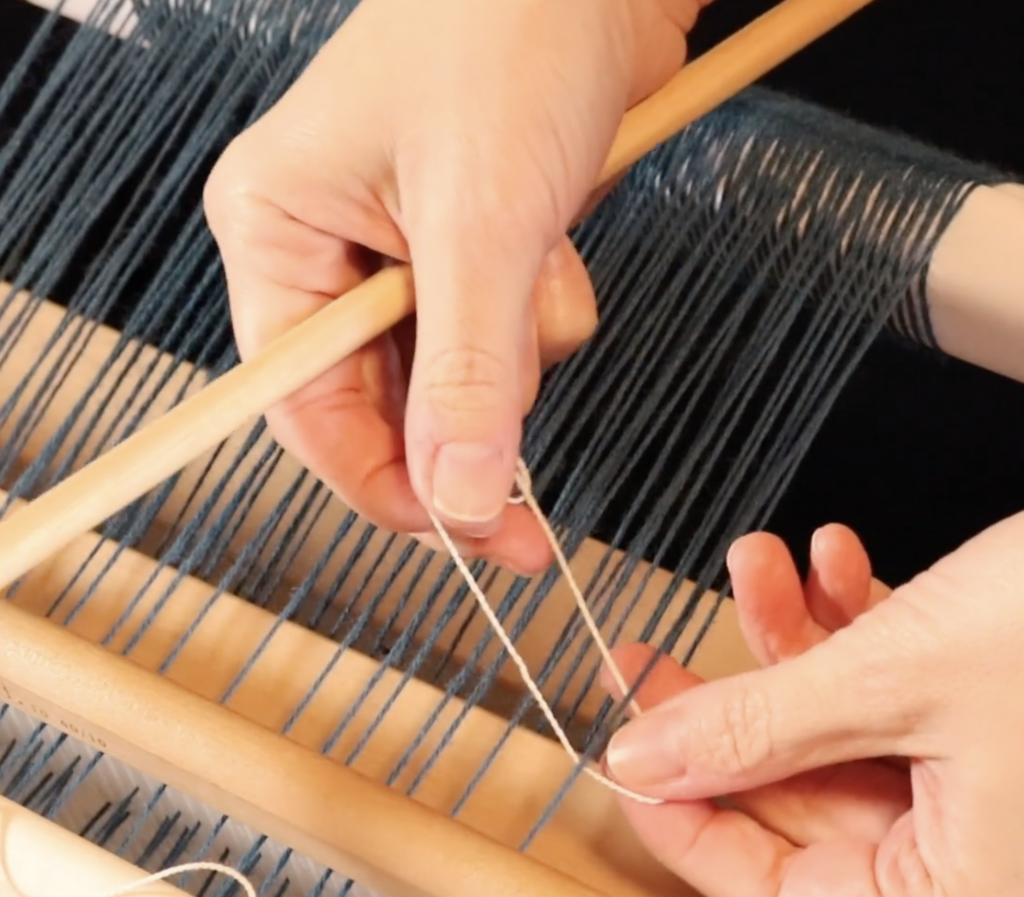
Bring a string heddle underneath the first thread so that it has a loop on either side of the thread. One loop will be smooth, the other will contain the knot. It is very much preferable not to have your knot near the thread. You want to arrange it so that it will sit on top of the heddle rod.
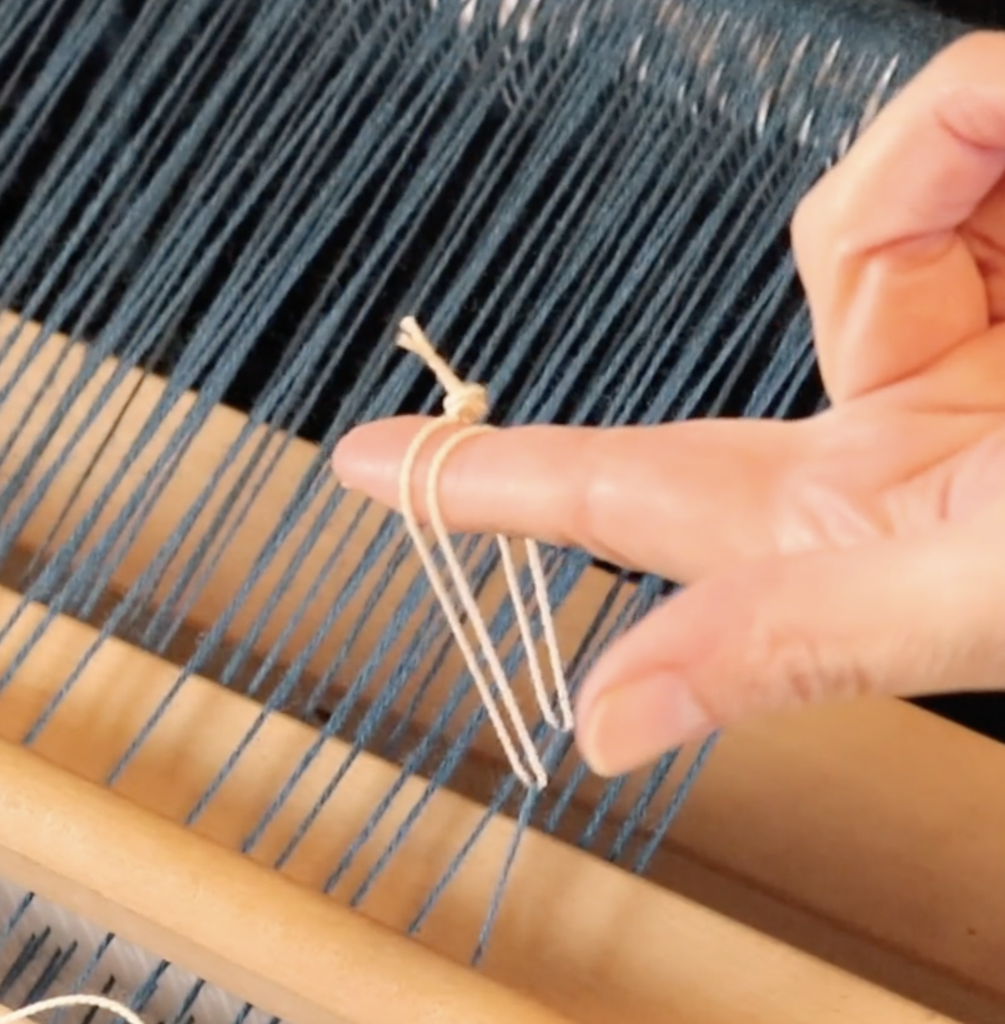
Bring the two loops of the string heddle together at the top. Note how my knot is sitting at the top rather than at the bottom or underneath the warp thread.
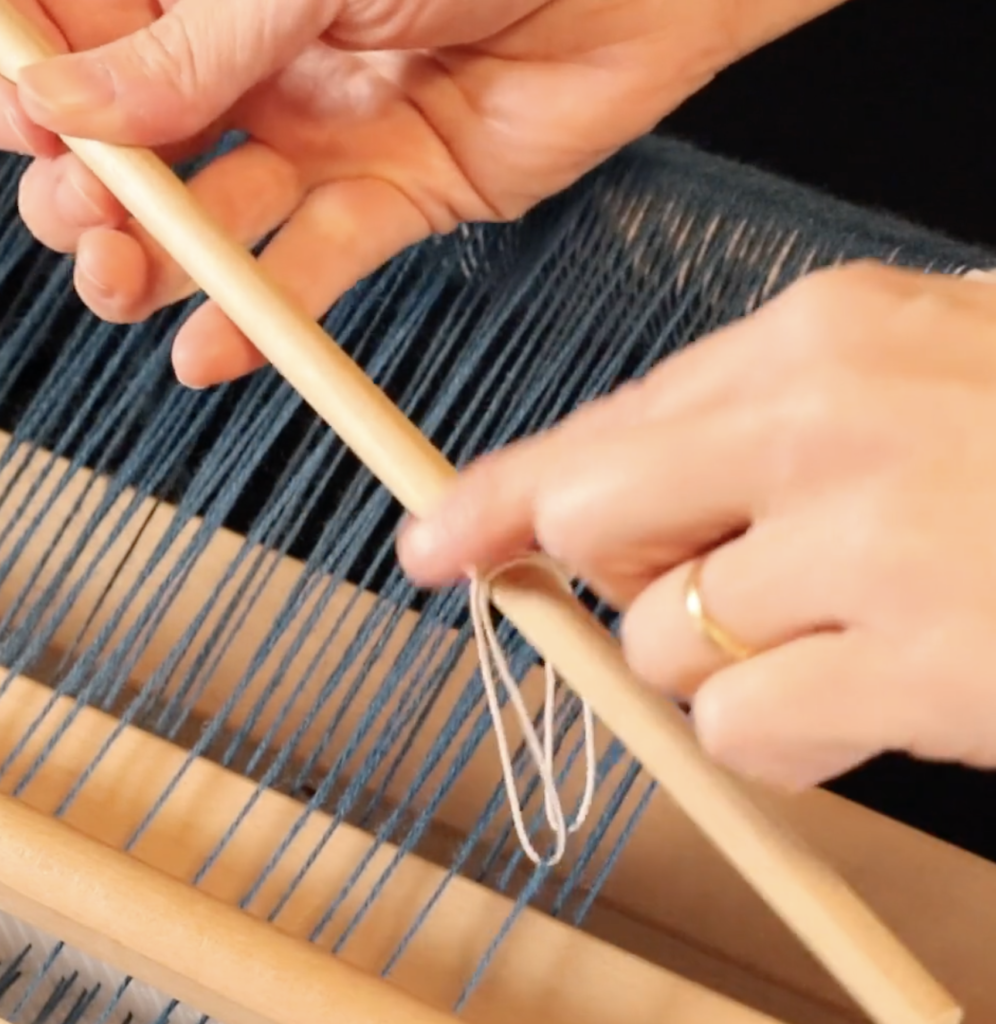
Bring in the heddle rod and slip the loops of the string heddle over it.
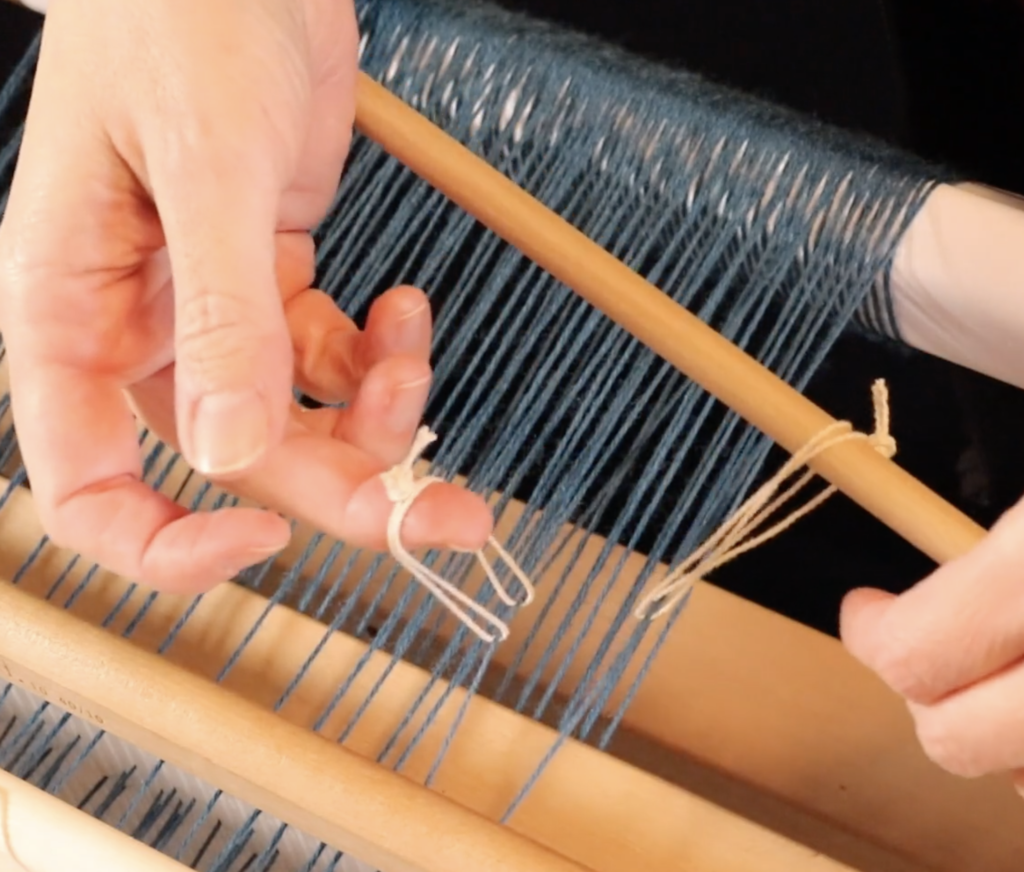
Now repeat this step with each warp thread that is sitting on your pick up stick, sliding them onto the heddle rod as you go.
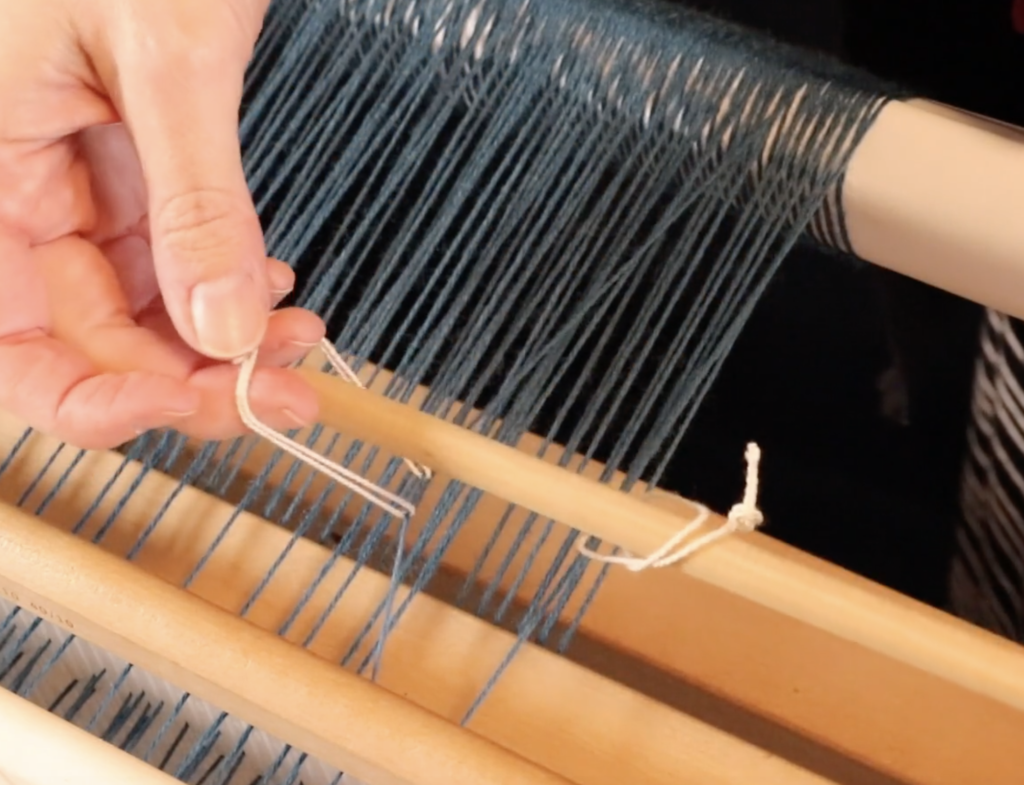
Some of you may like to put the rod down on top of the warp as you organise each string heddle, I like to keep the rod in my left hand while managing the string heddles with my right. It’s a bit fiddly, but I do find it faster. You might need a bit of practice under your belt before you use my approach this though.
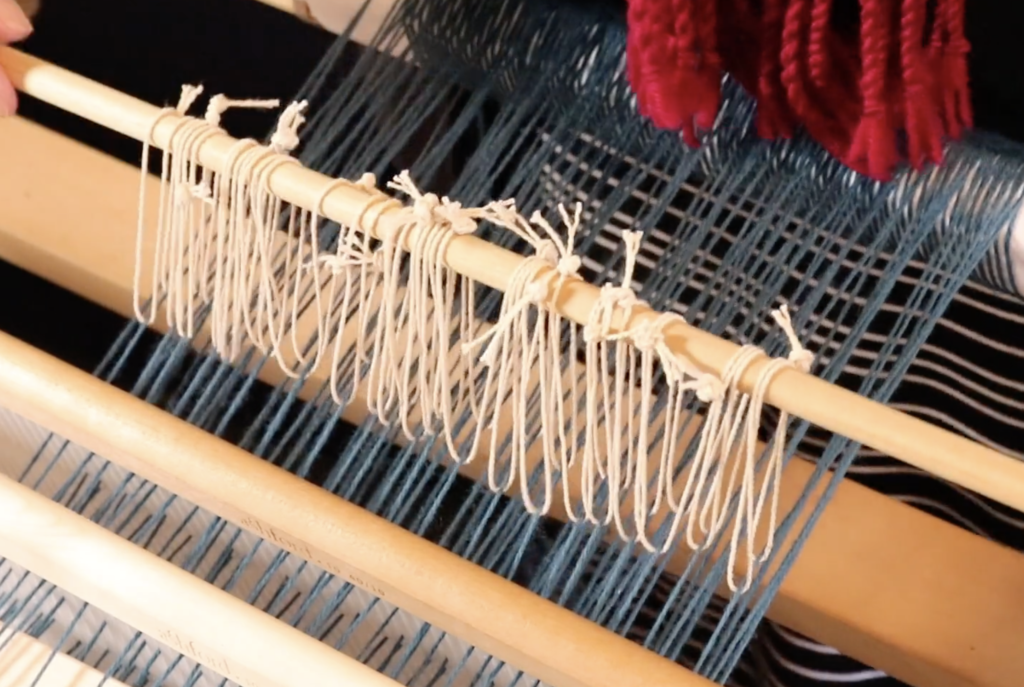
Once you have all your string heddles on the rod, you will want to secure them as it is all too common for that heddle rod to slip and then you lose all your hard work!
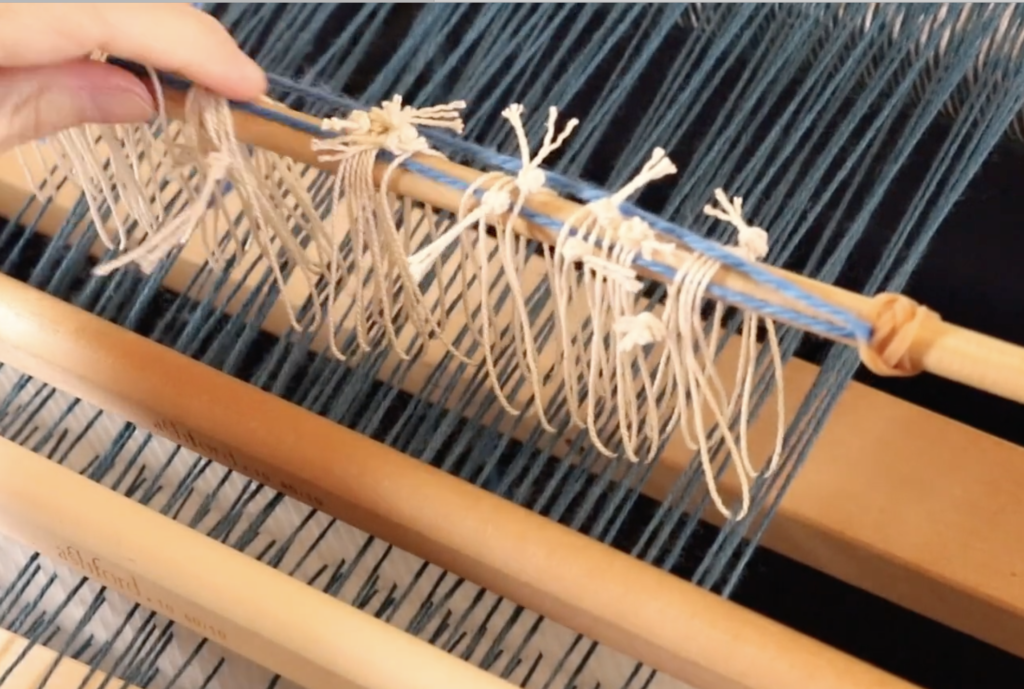
Some weavers like to use some masking or painter’s tape and place it across the top of the heddle rod.
I have a different and perhaps peculiar method, but it sure does work! I place a rubber band on each end of the rod, close to the string heddles.
Then I run a piece of waste yarn right through the middle of the string heddles, pulling each end of the waste yarn through a rubber band on each end. Then I pull the cut ends of the waste yarn up and tie a bow.
Using this method, my string heddles don’t move and are completely secure on the rod. And no annoying, sticky tape.
If you want to see a video tutorial of this process, you can watch here-
I have a number of classes that make use of heddle rods:
Converting Drafts to a rigid heddle loom
Overshot on a rigid heddle loom (coming soon)
Pinwheels on a rigid heddle loom
All of my free Krokbragd videos on Youtube are set up with a heddle rod too-
I hope you enjoyed this two part heddle rod series, don’t forget to catch the first post on making string heddles here if you haven’t already.
Be sure to leave any questions or comments below, I love to hear from you.
Until next time…
Happy Weaving!

